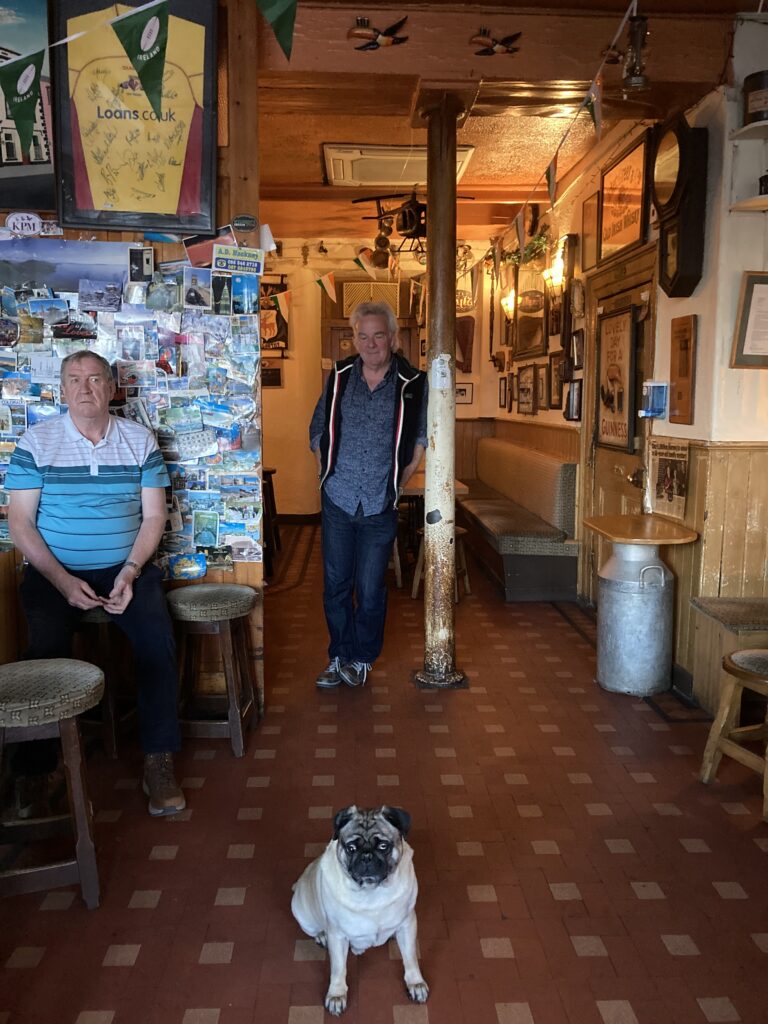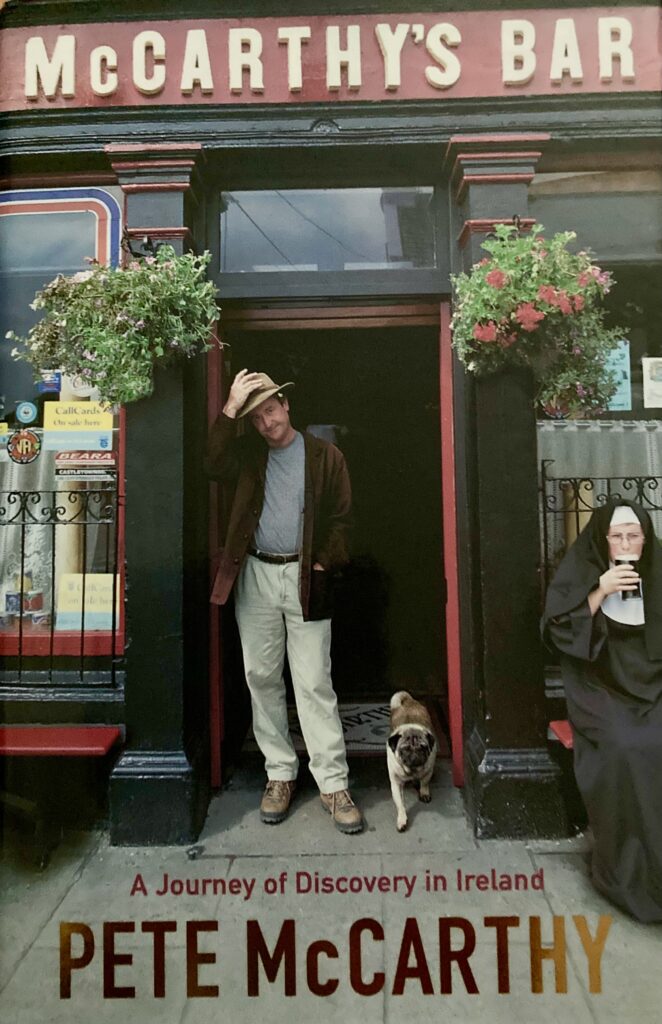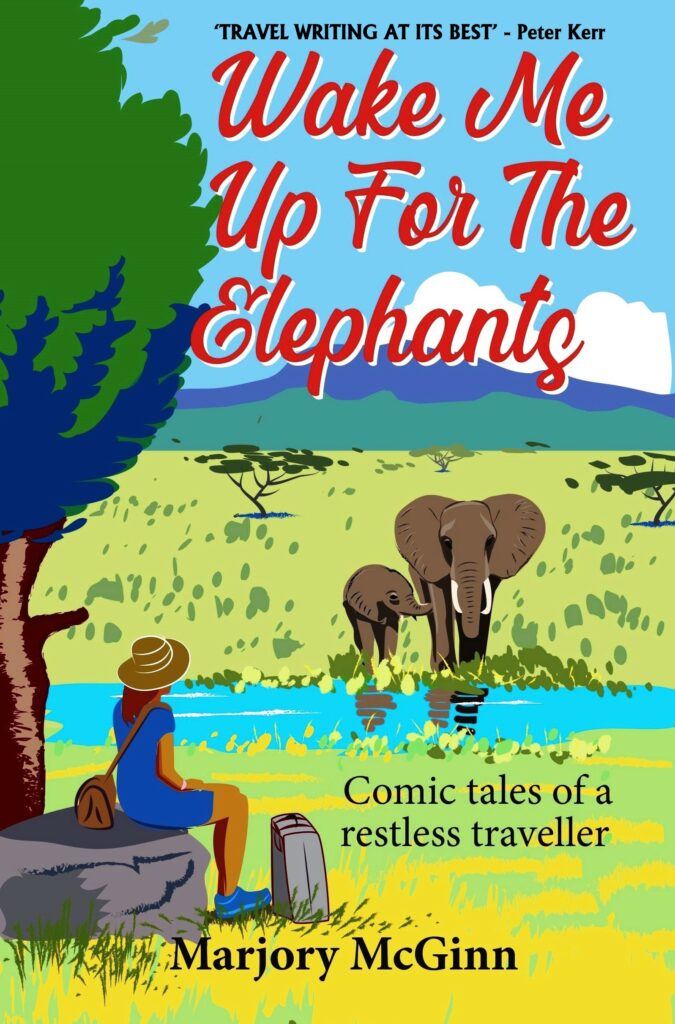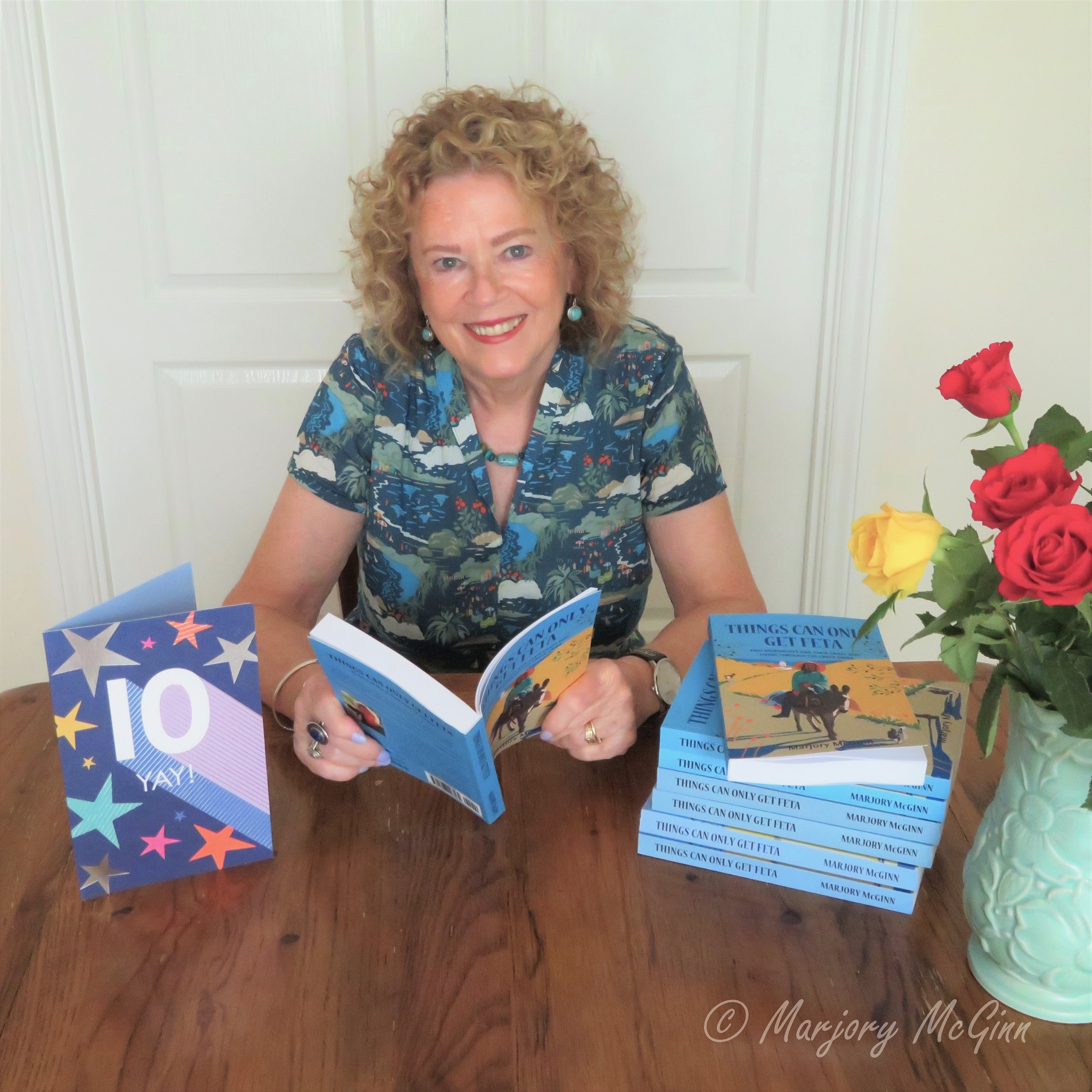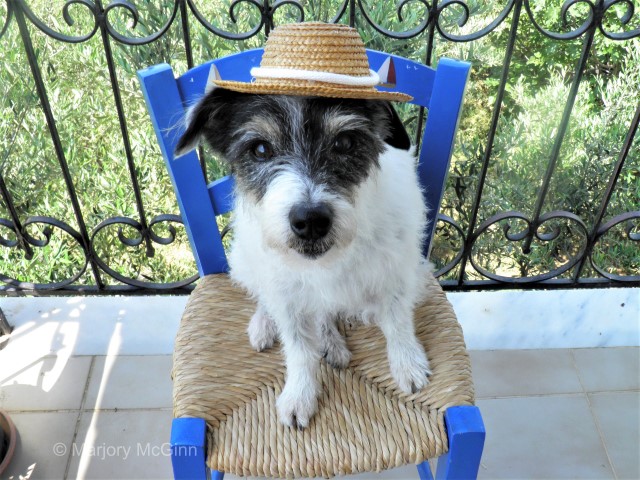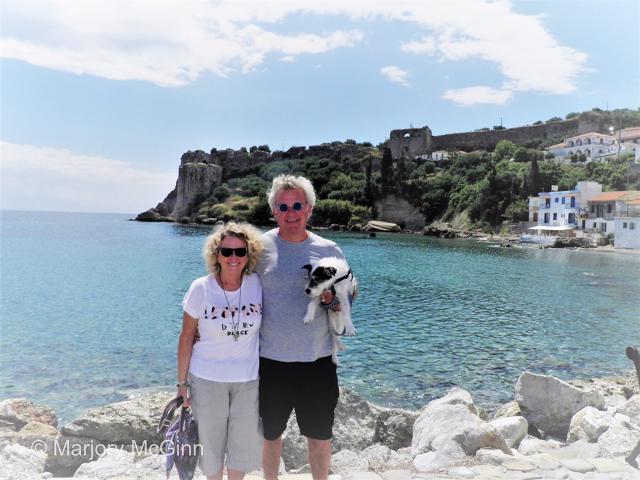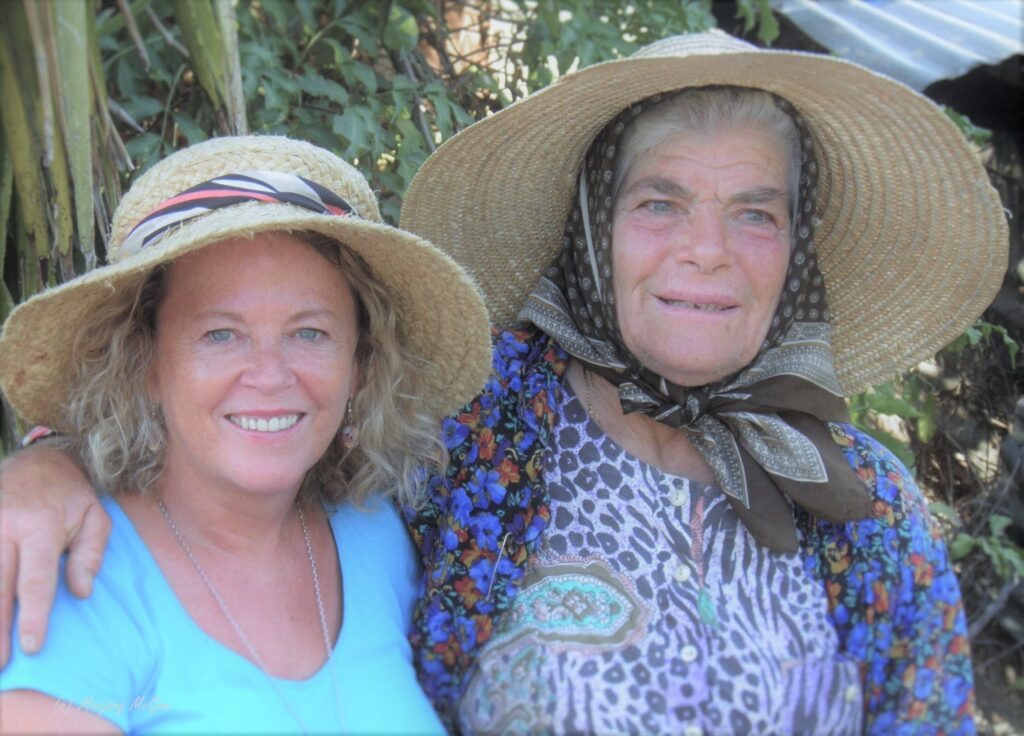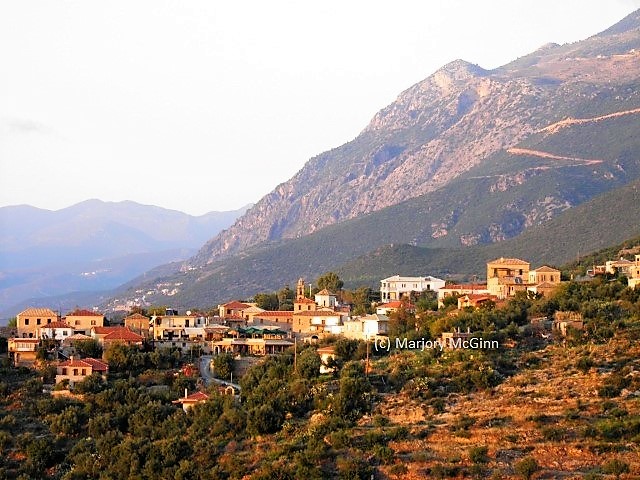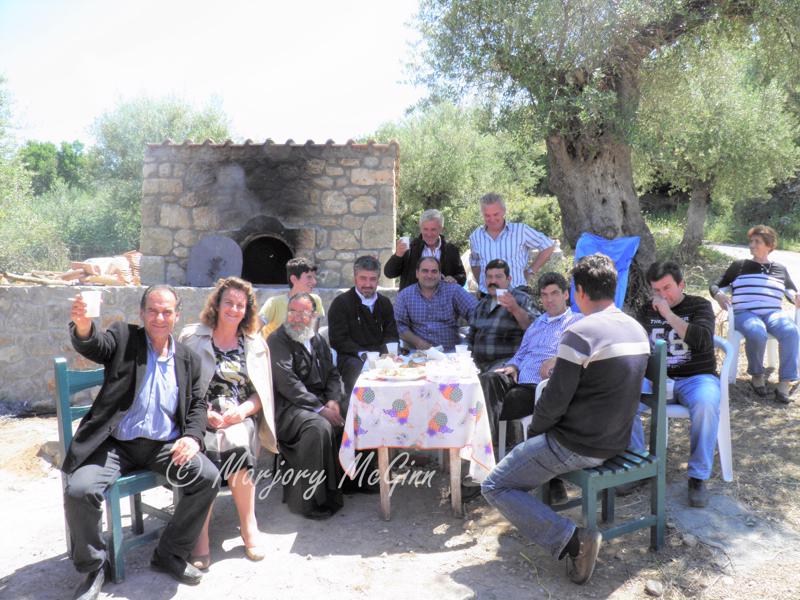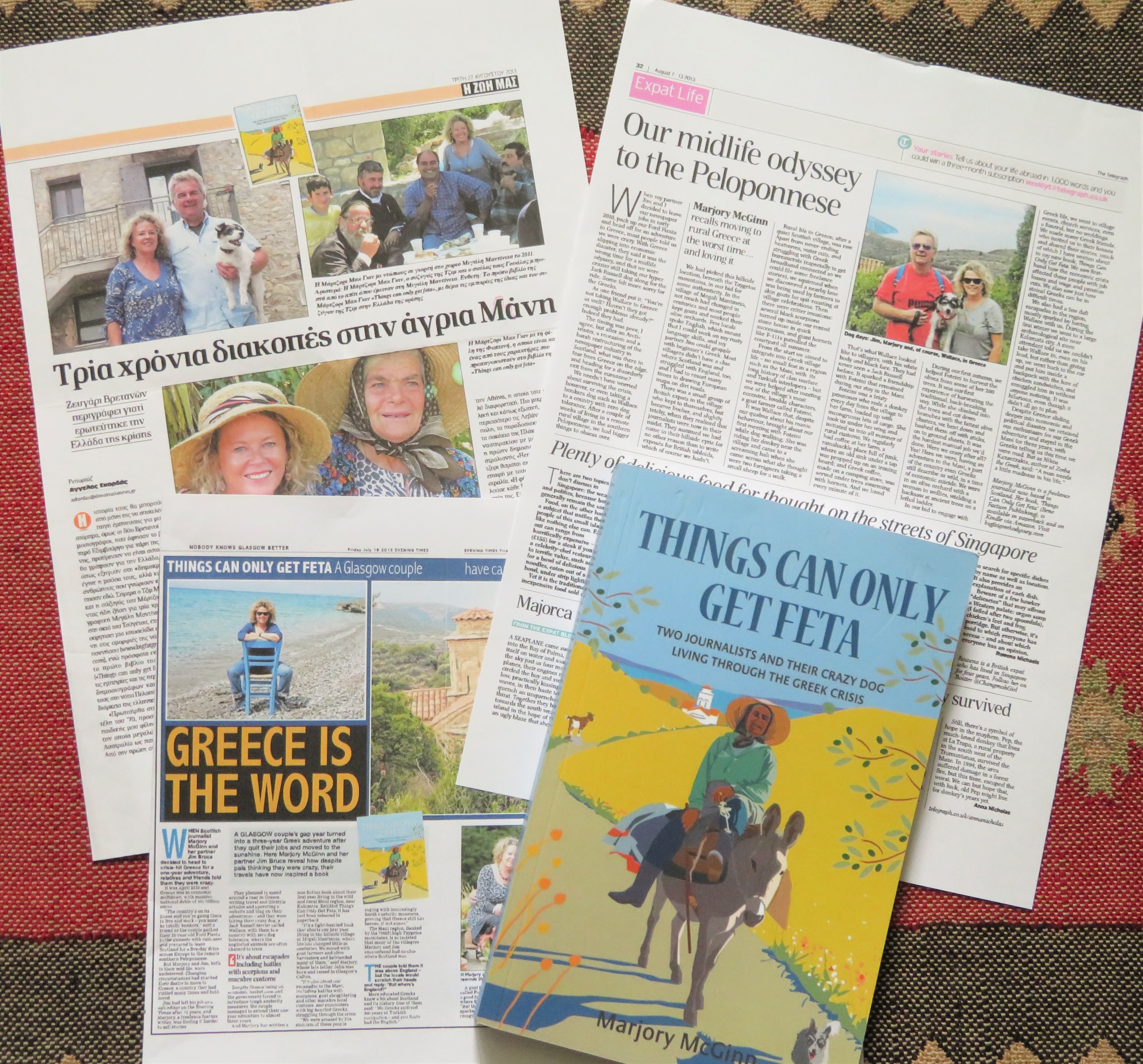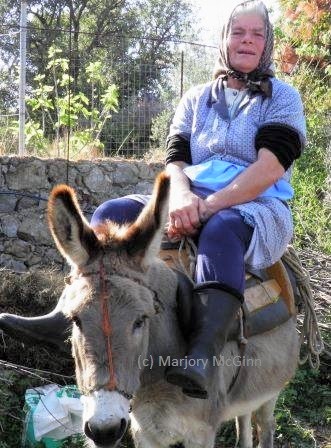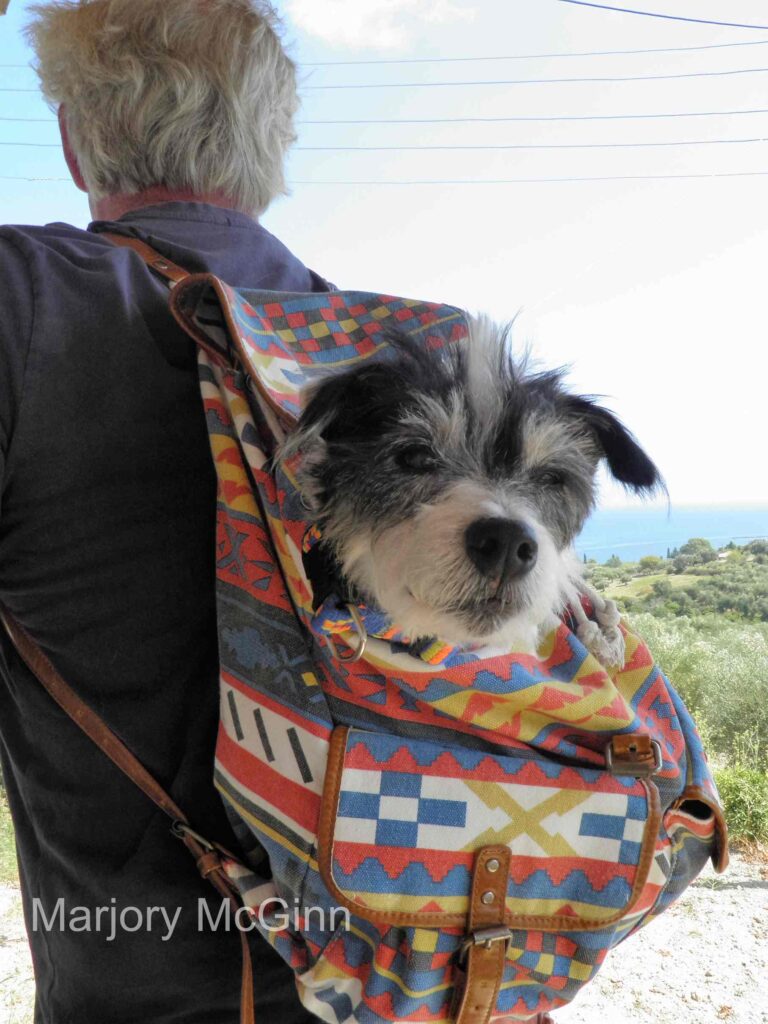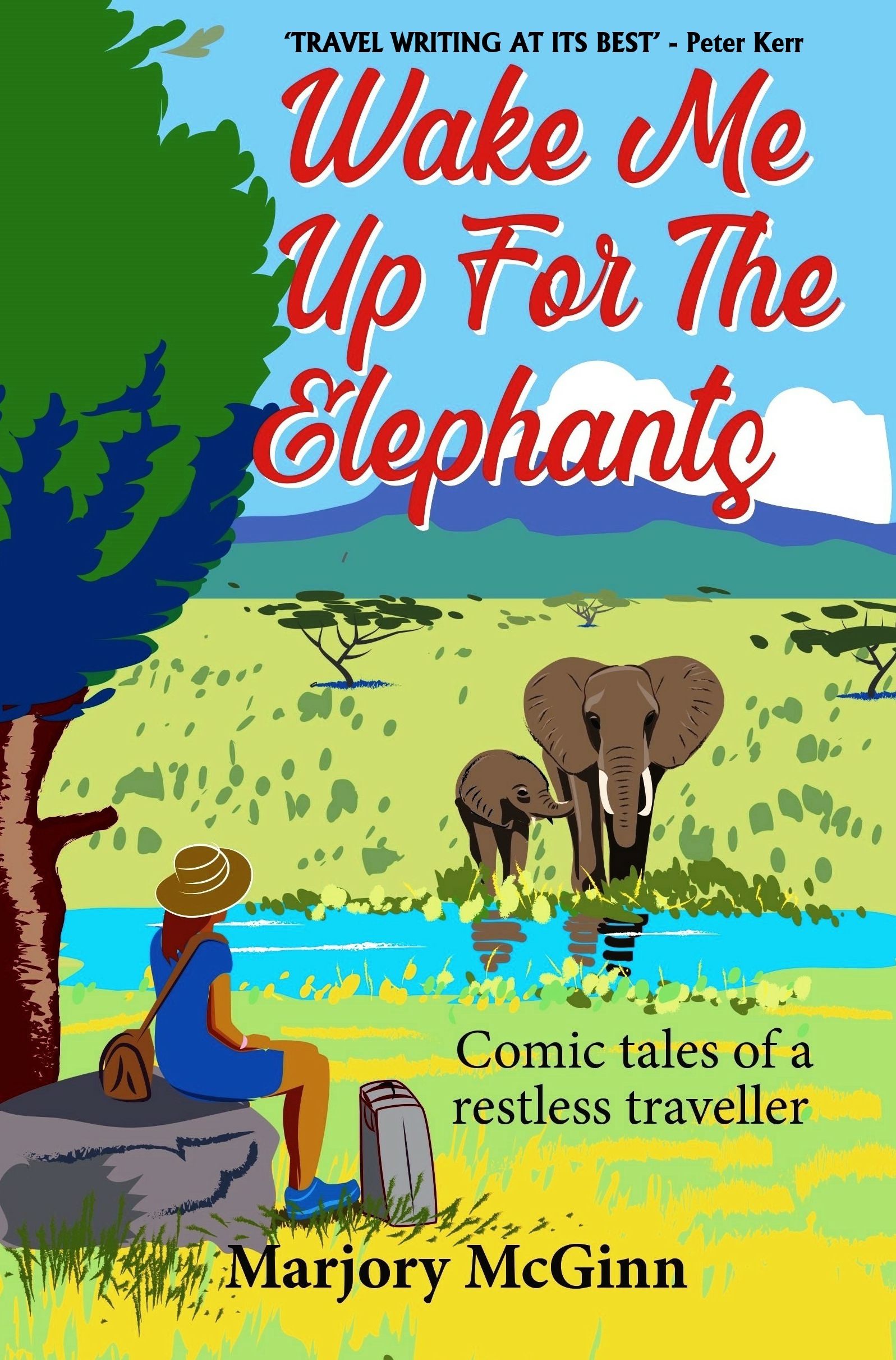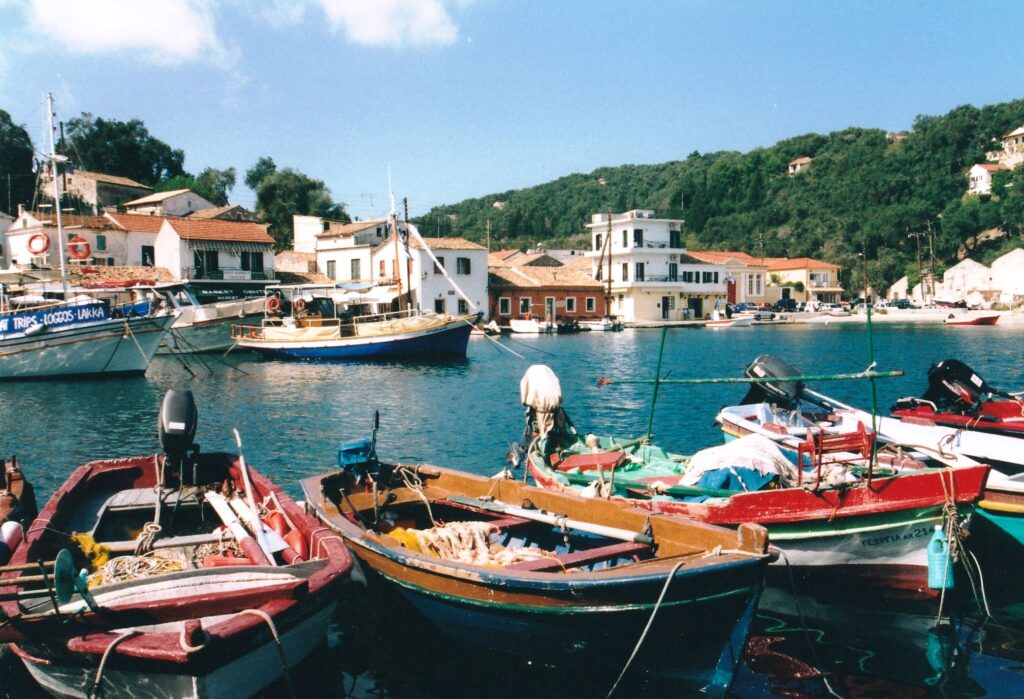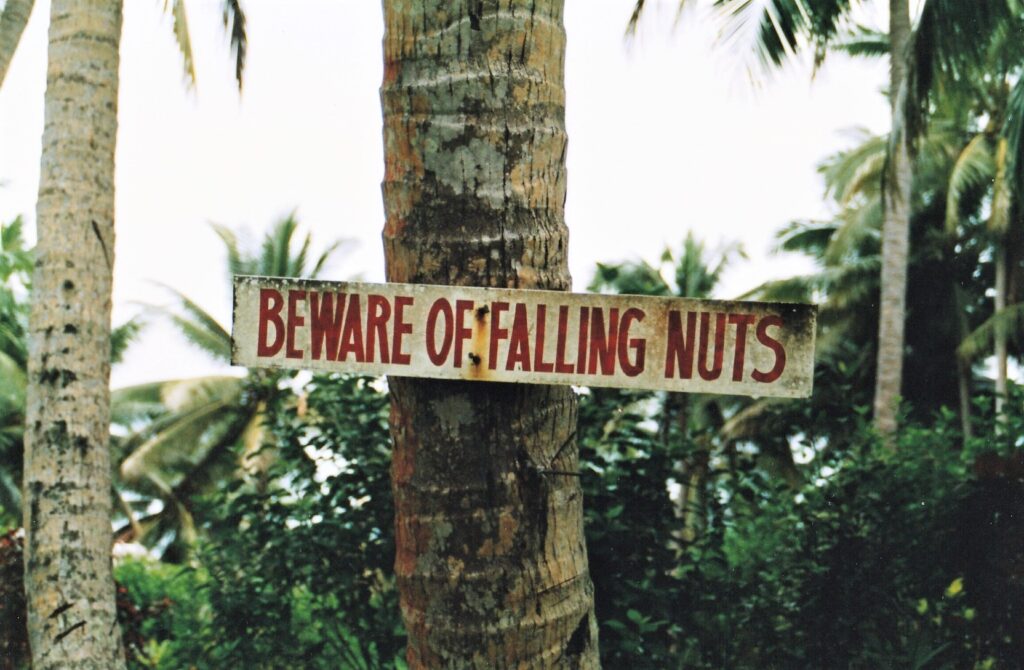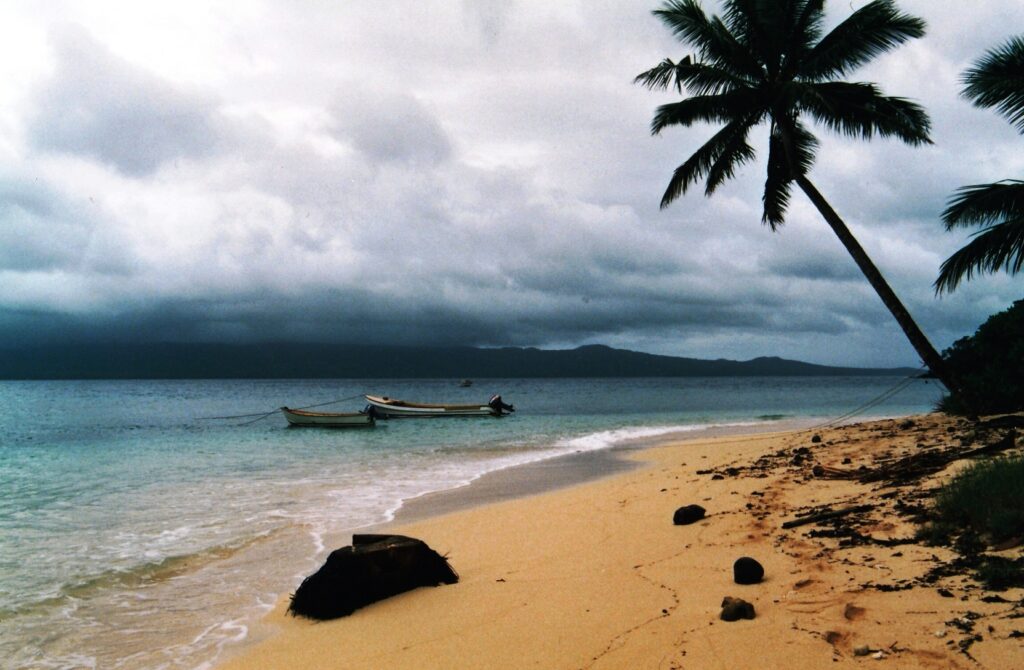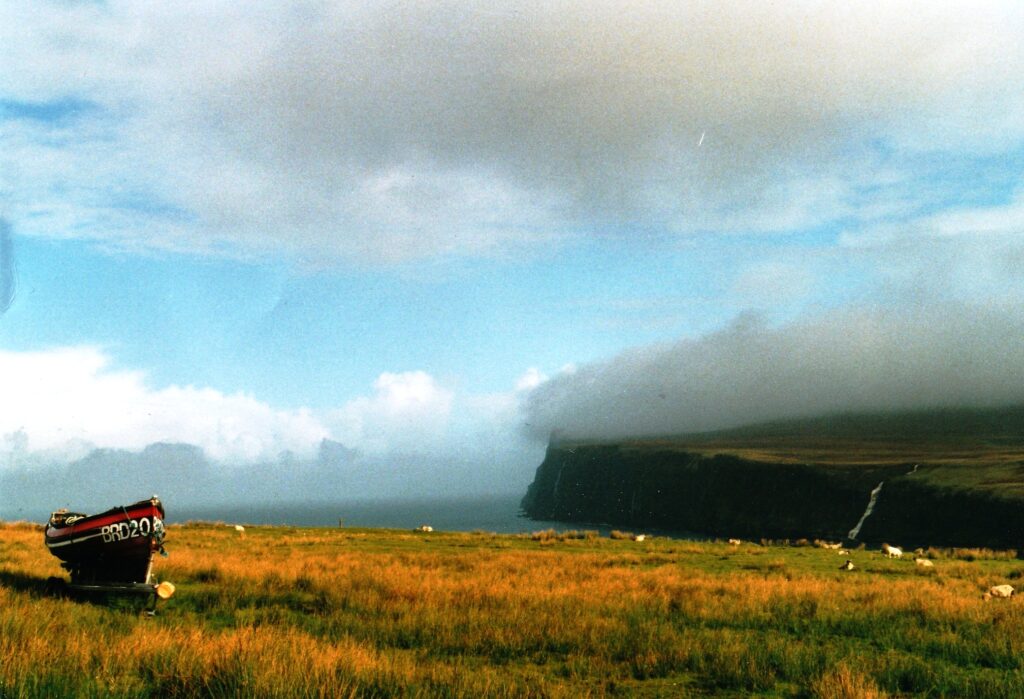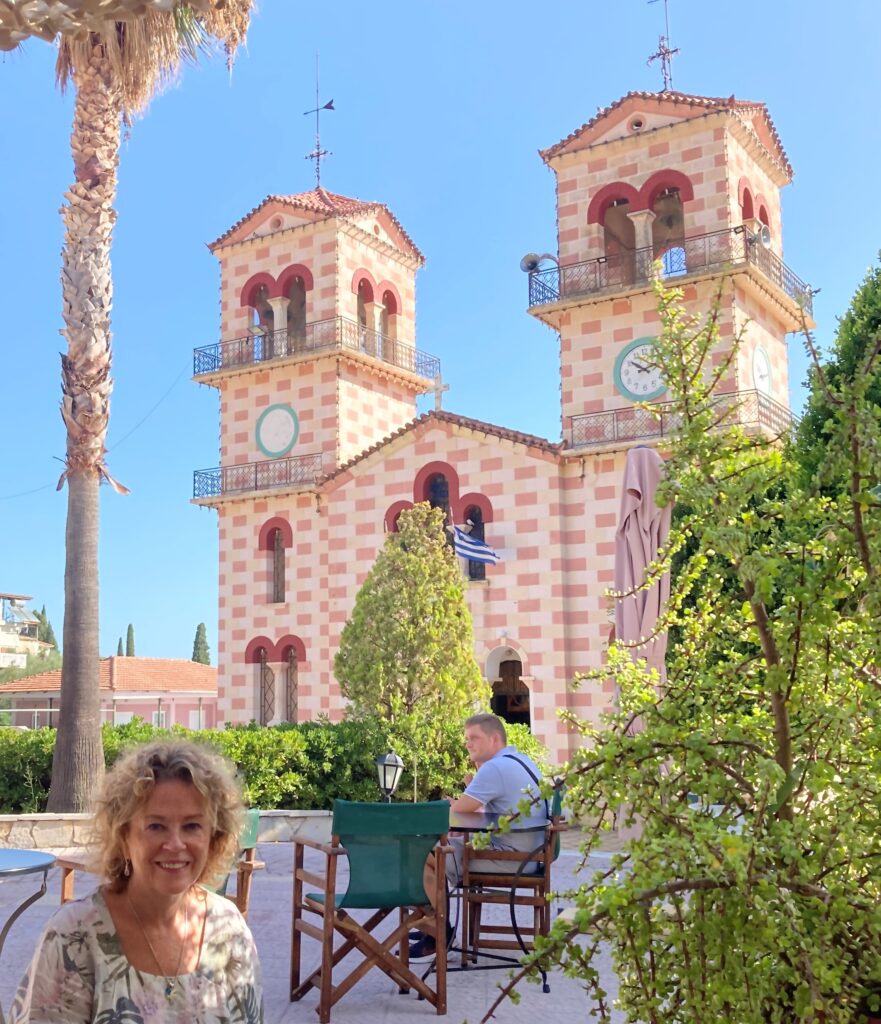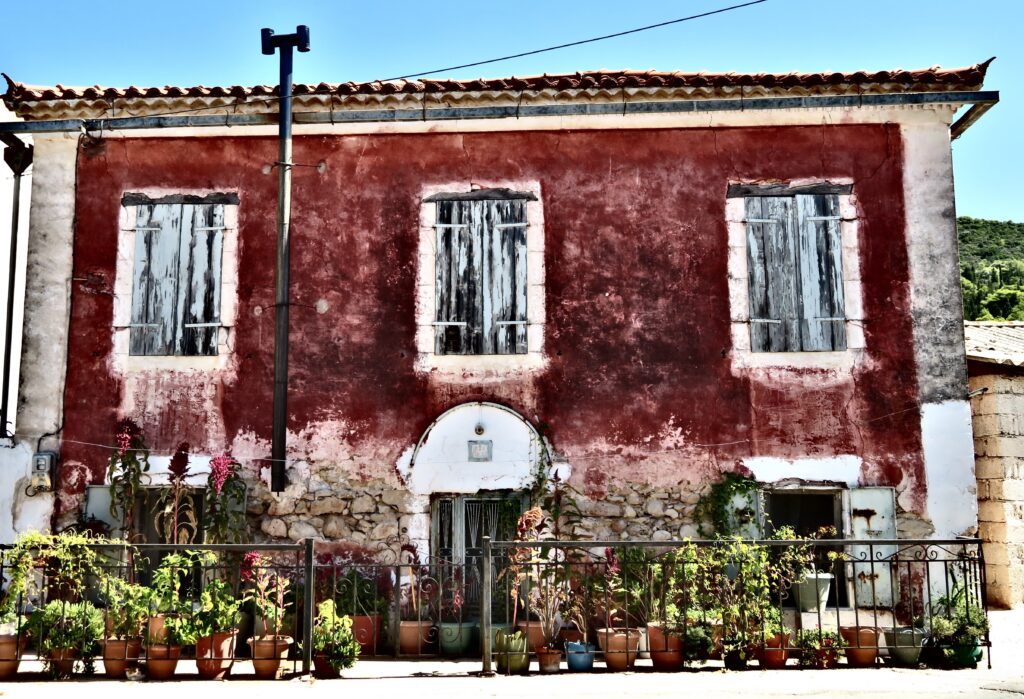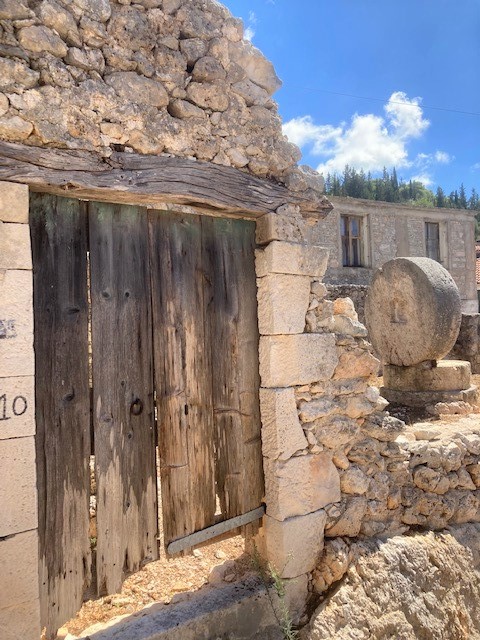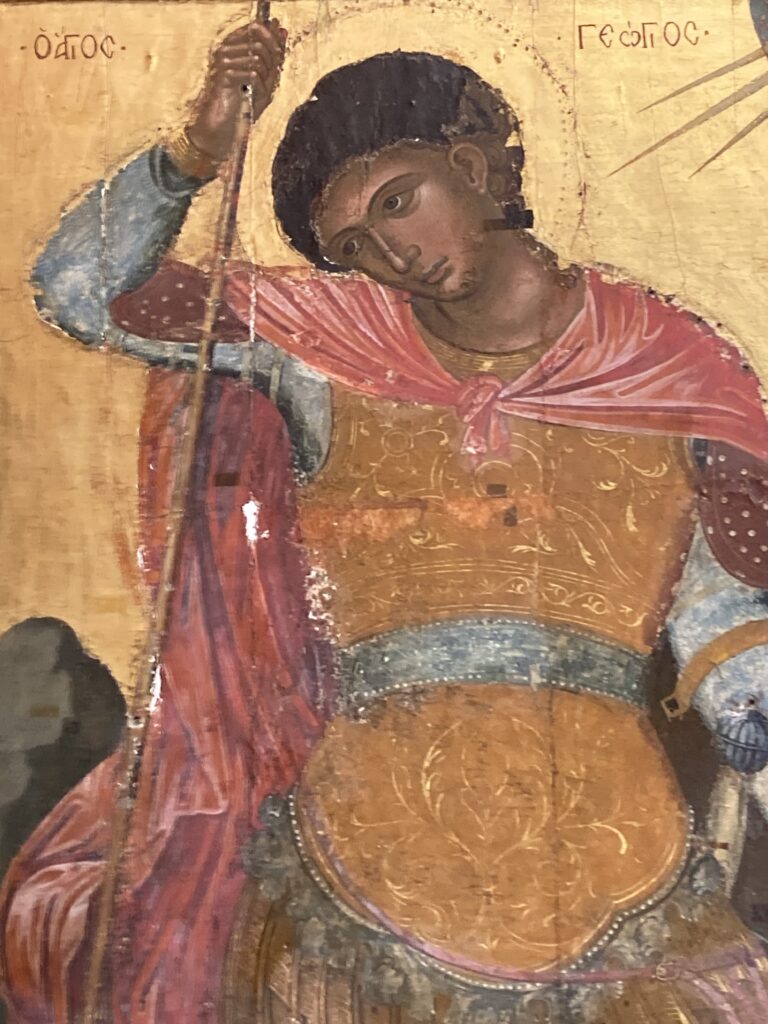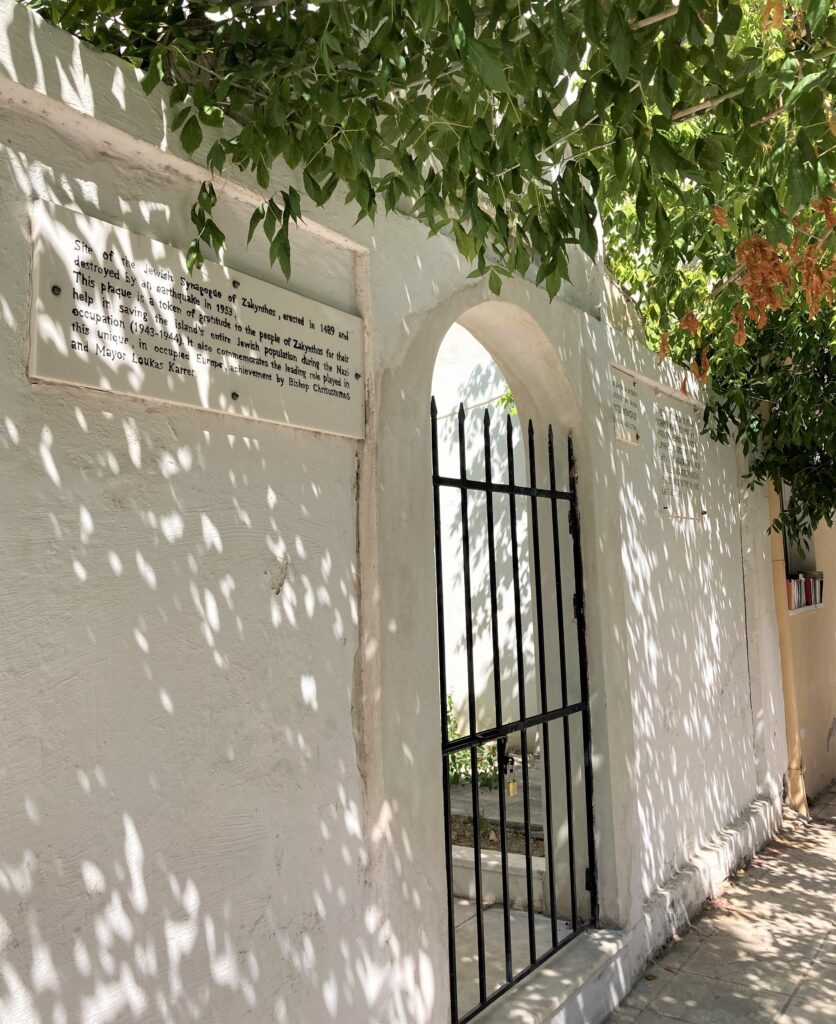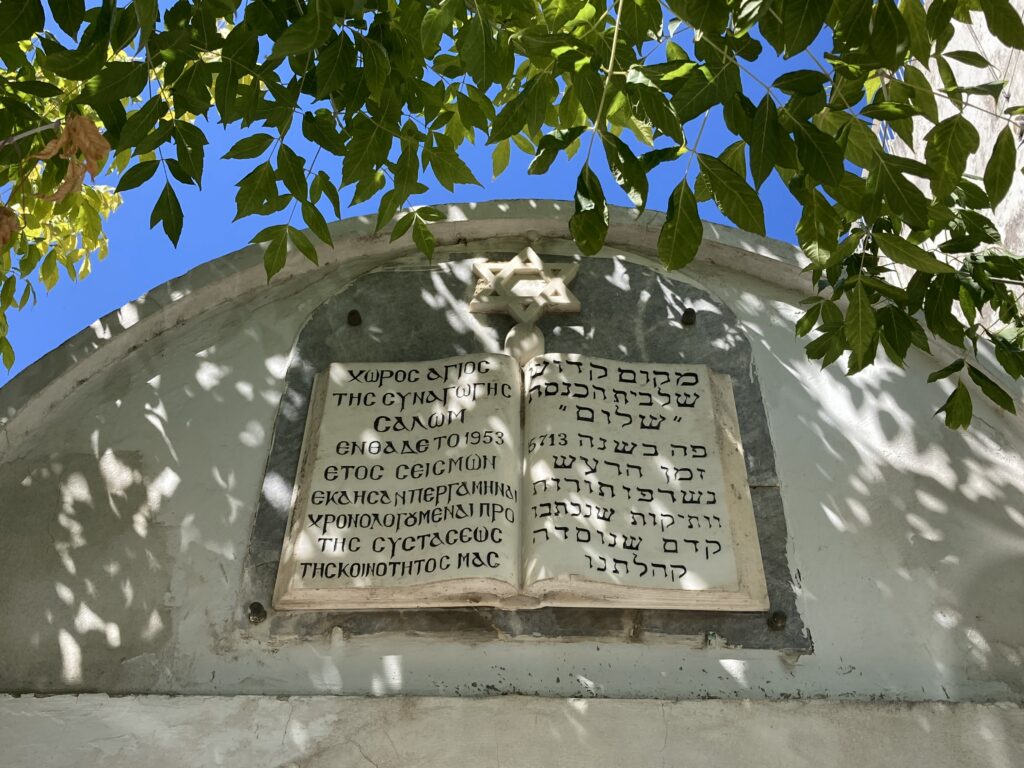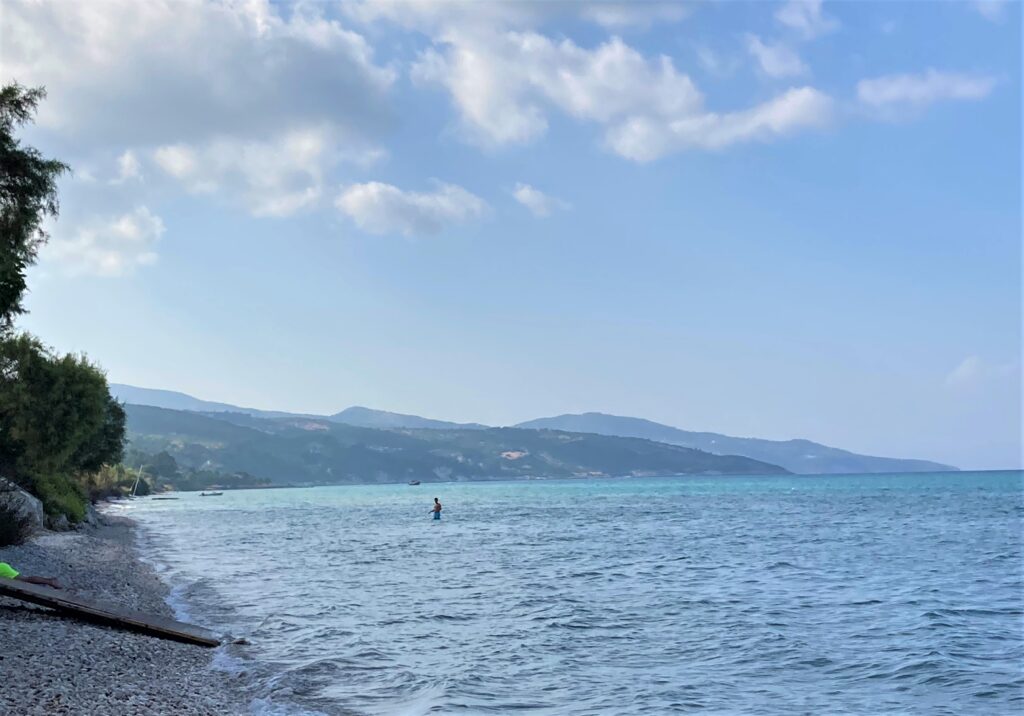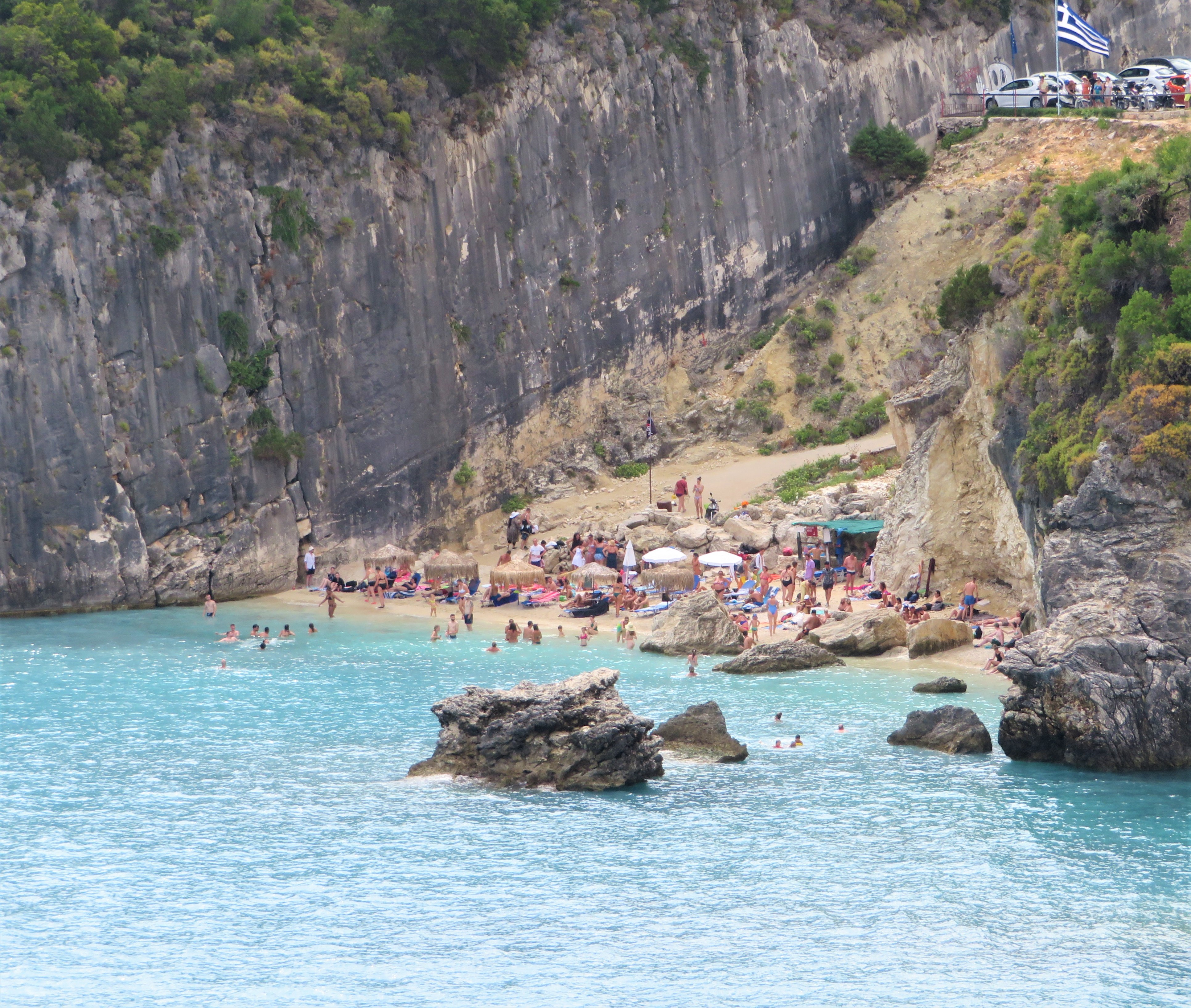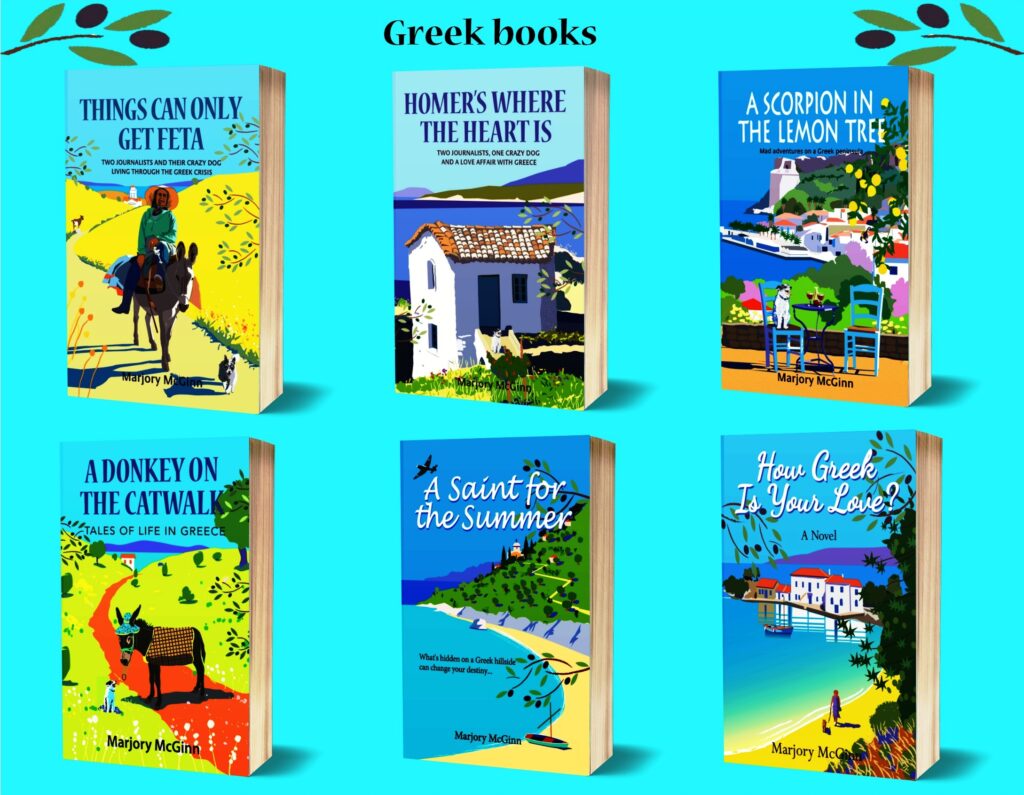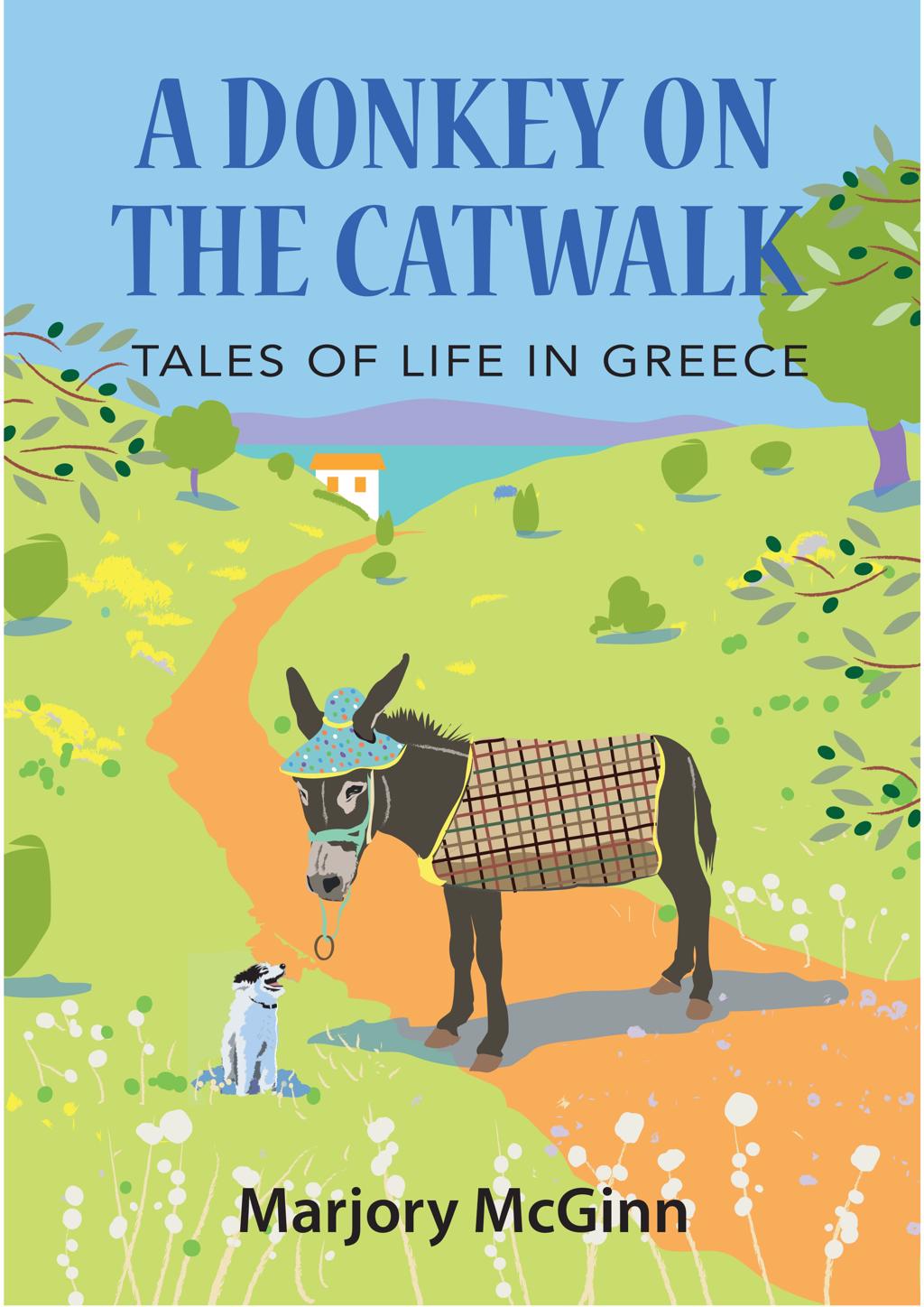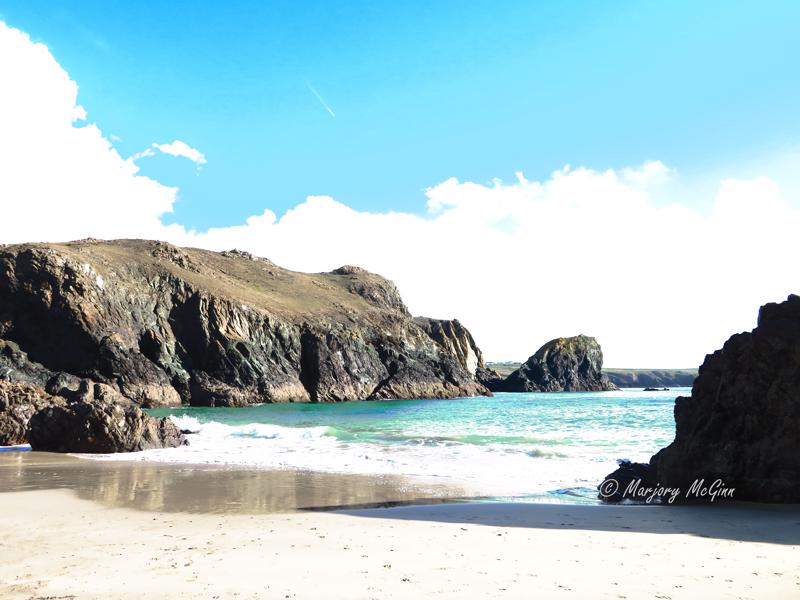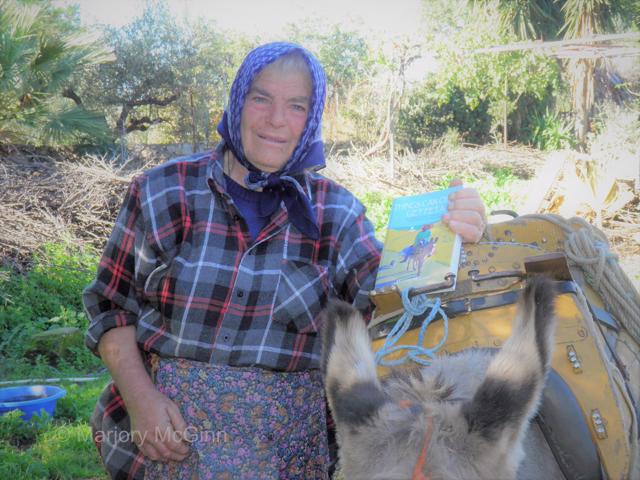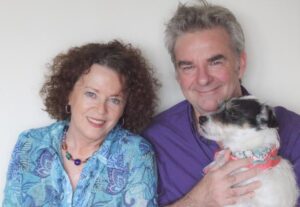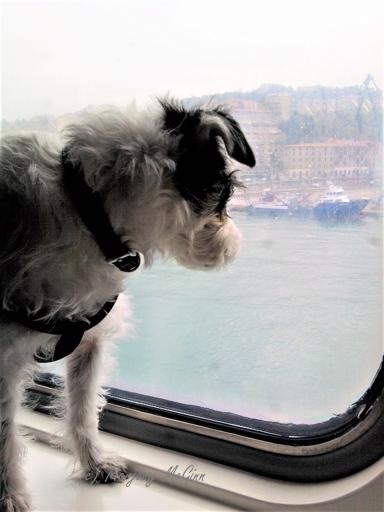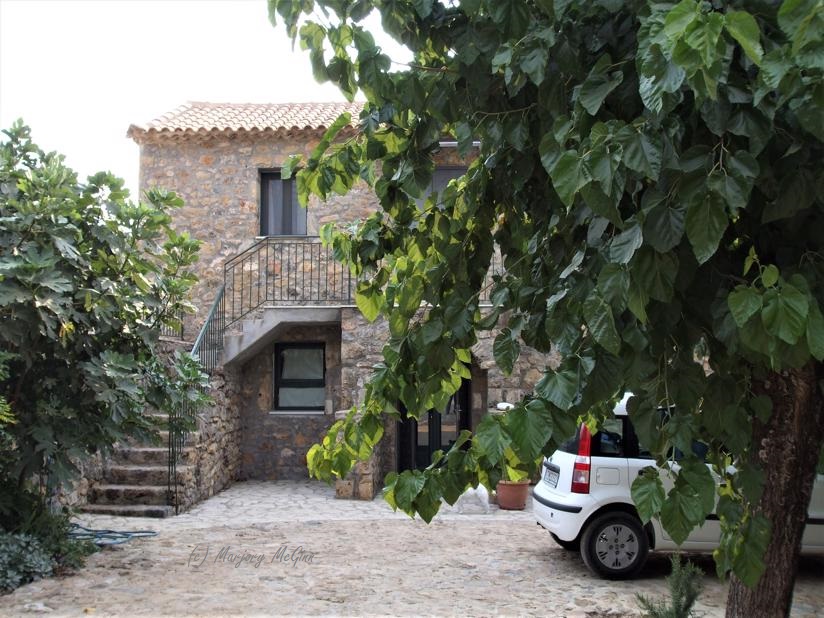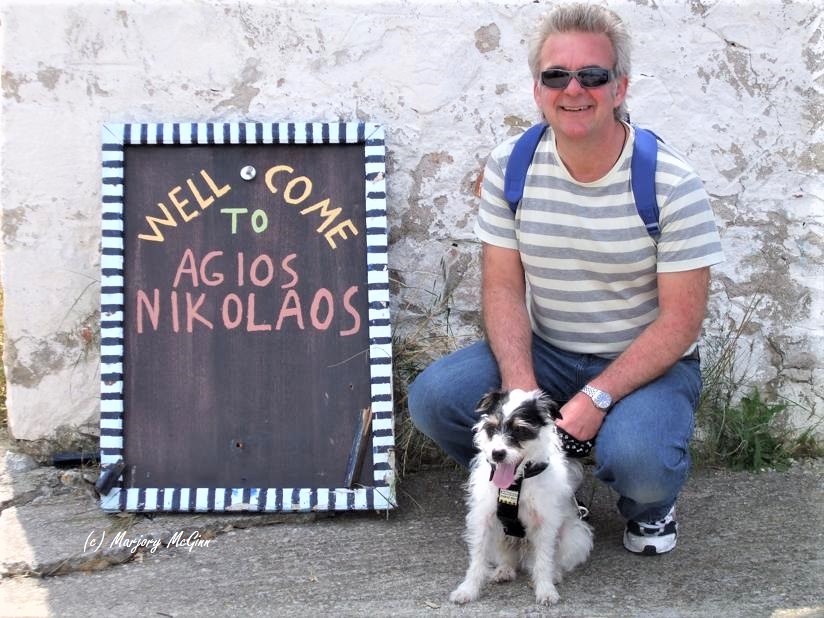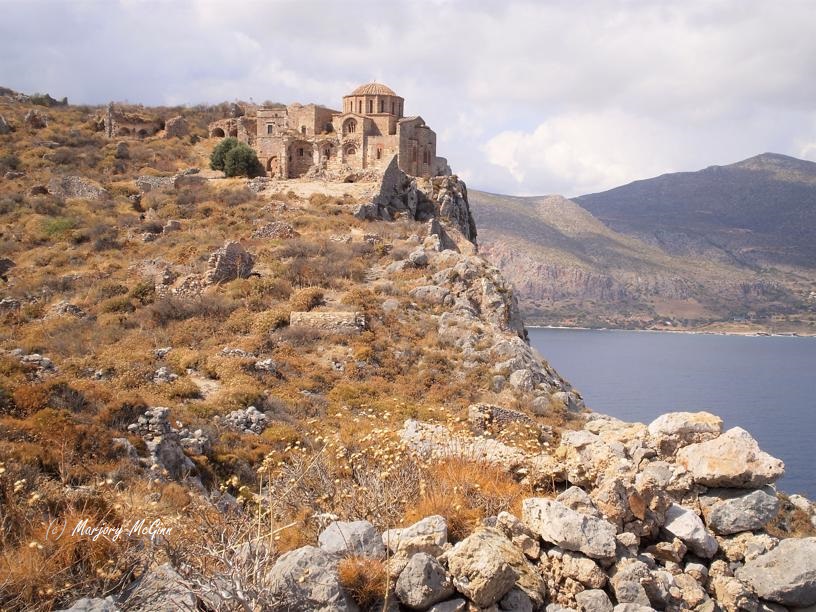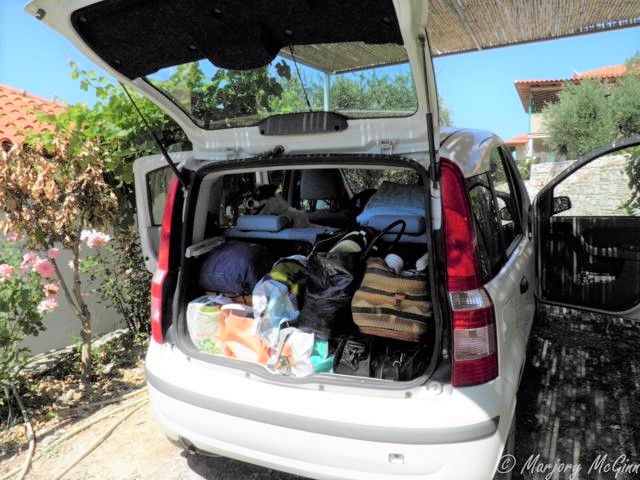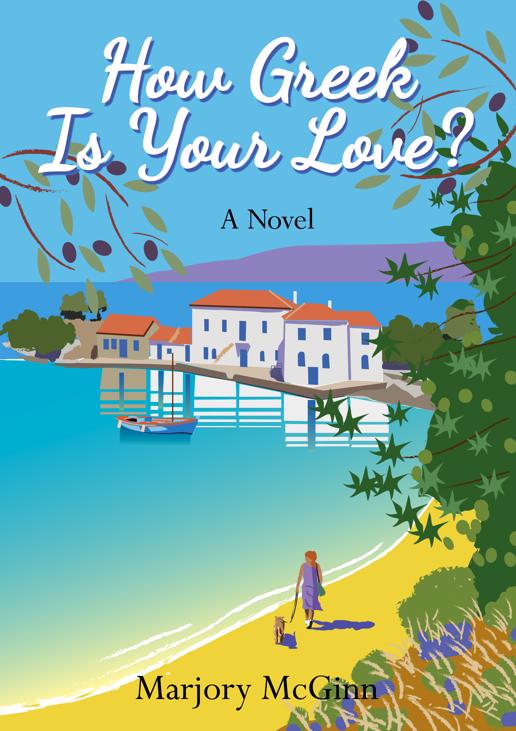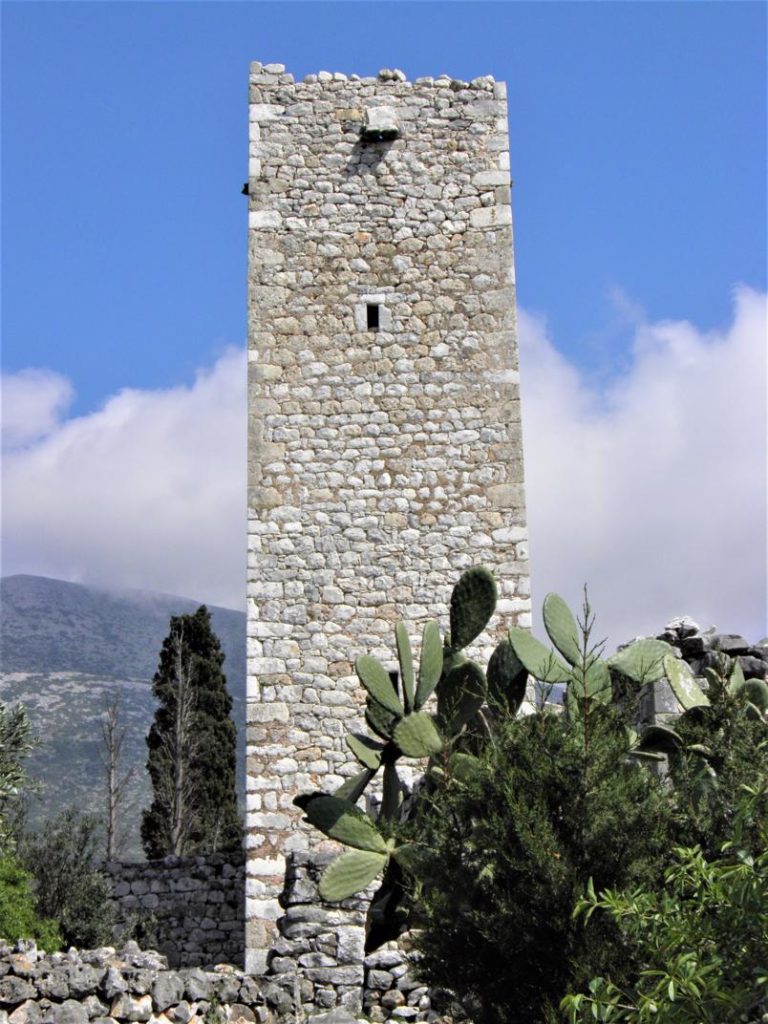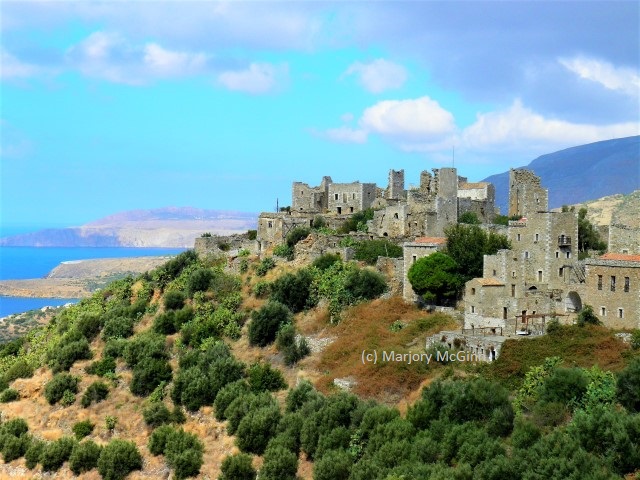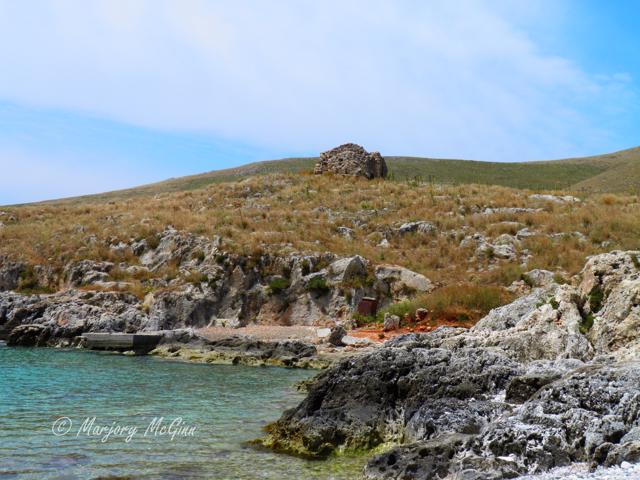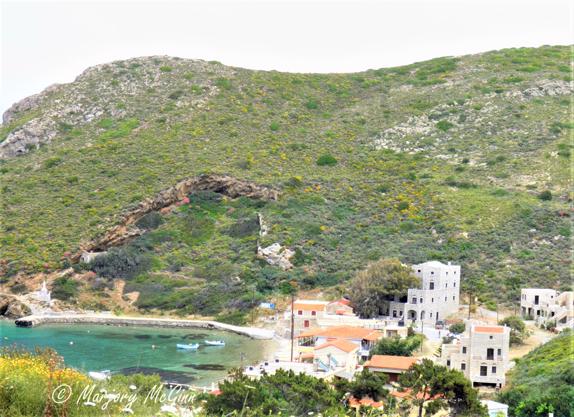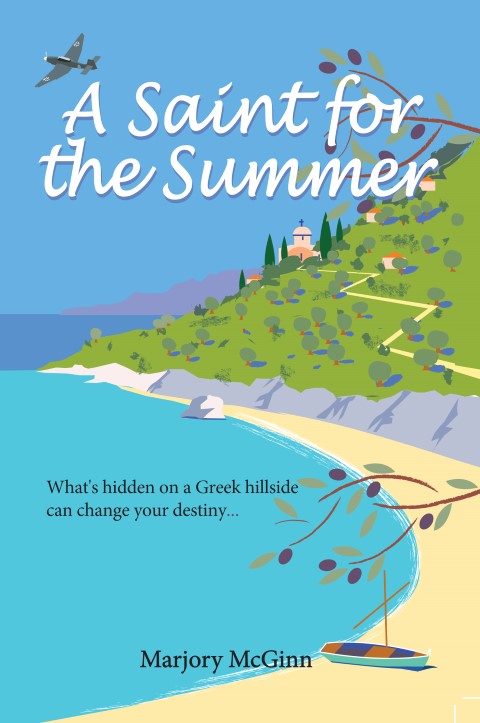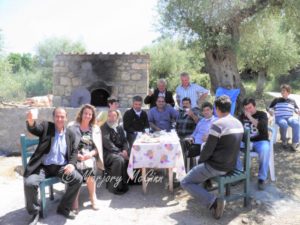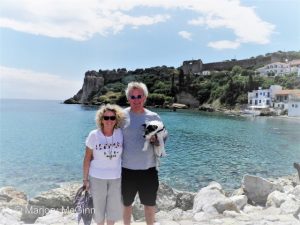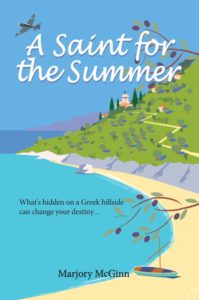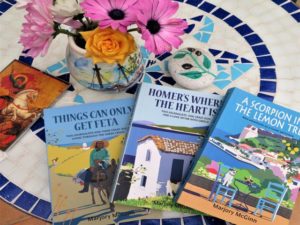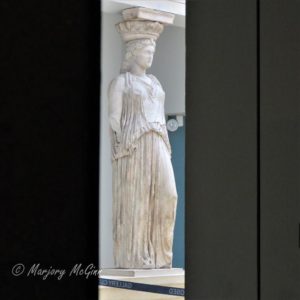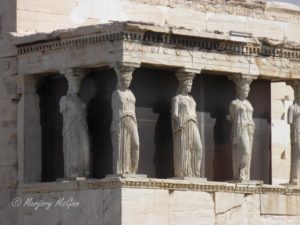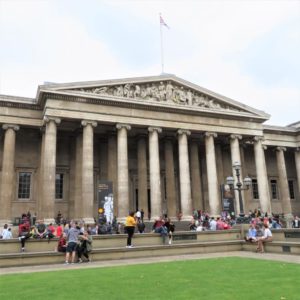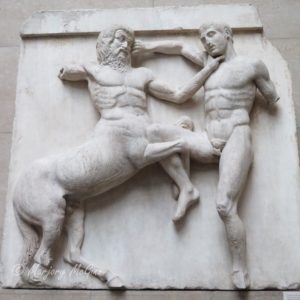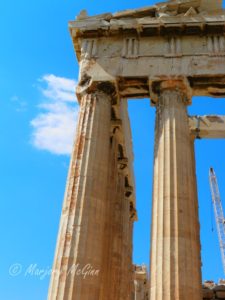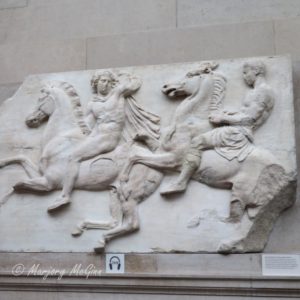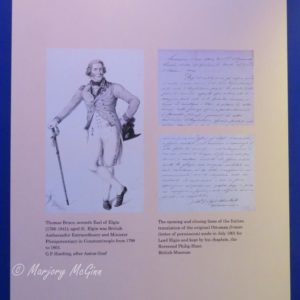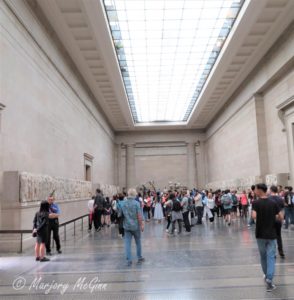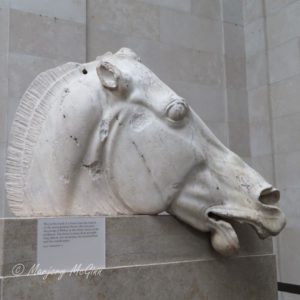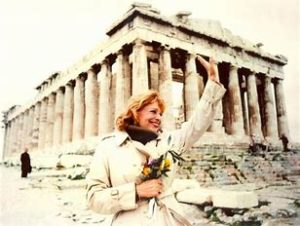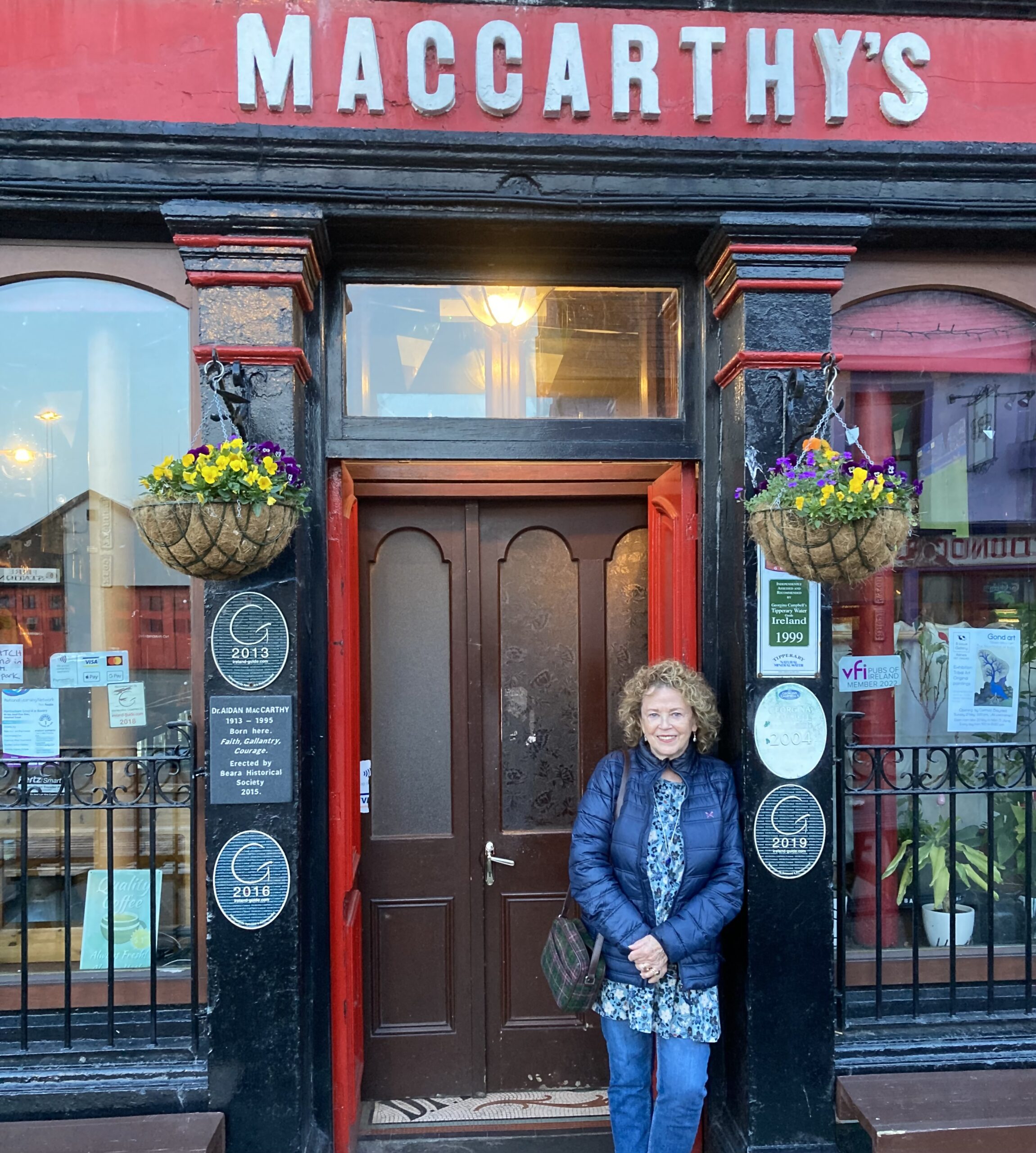
WE’D just stopped at a tollbooth on the motorway from Dublin to Cork, excited about exploring the city and then the south-west coast of Ireland.
Jim leaned towards the female toll collector, holding out his two euros. She didn’t take it.
“There’s no charge, sir, the woman in the car ahead paid for you,” she said in a lovely lilting accent.
Jim gave me a shocked look, then turned back to the collector. “What? It’s paid? Why would the woman do that?”
“How would I know?” She shrugged.
“Do you think she knows me?” said Jim to the toll woman, as if thinking out loud, trying to make sense of this peculiar gesture.
“I wouldn’t know anything about that,” she said with a wry smile, enjoying this peculiarity herself, or so it seemed. Then she waved us onward.
“Did you hear what the toll woman just said?”
“Yep. What’s it all about? Free tolls for incomers, do you think? Or maybe she liked your smiley face, Jim.”
He laughed. “Hope it’s going to be like this everywhere: free car travel, lashings of Guinness. I’m loving this place already.”
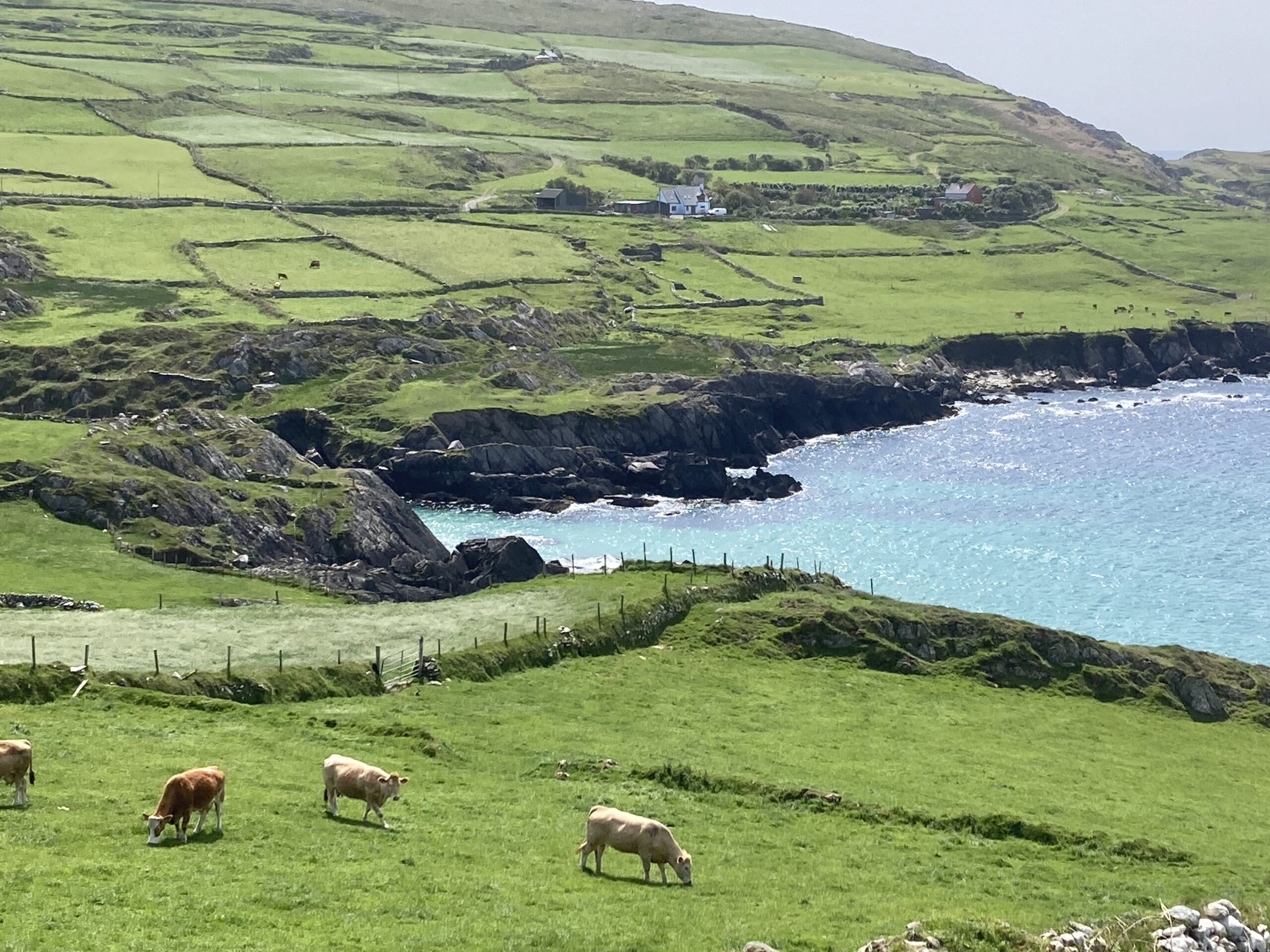
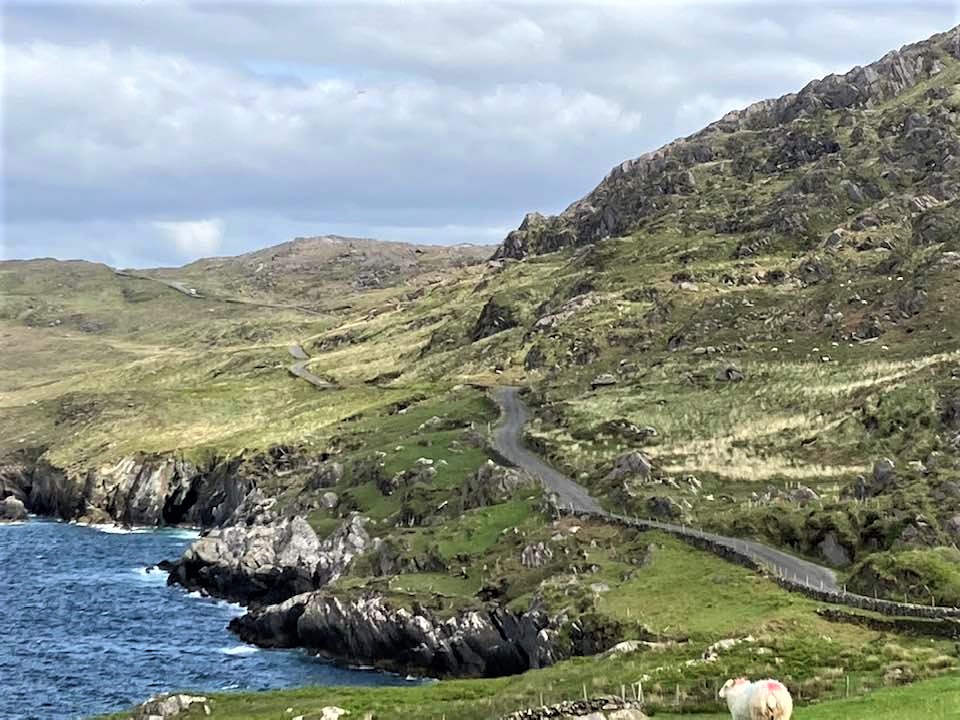
There really is something about Ireland, not just the fabulous scenery, the emerald green fields and far-flung villages. It’s the people mostly. Their minds tick over to a different beat. Their logic doesn’t seem to conform to ours, mostly. They’ve taken left-field thinking to an Olympic level. And it’s all rather grand, until you need directions somewhere, then the logic bedevils you. The instructions never make sense, comical though they are. Driving in Ireland often reminds me of driving in Greece, where directions and rules are bendy things.
But otherwise, I love the wickedly funny way the Irish pull the rug out from under any po-faced inquisitor, blagger, or visiting foreign anorak stressing over bucket lists. I love the craic, the way the Irish make ordinary things fabulously interesting and fun. We listened to the radio a lot while driving in Ireland and I was struck by the banter on phone-in shows. I liked the fact they could talk about ordinary things we’d never touch on in UK for a dozen dismal reasons.
On one radio show there were two or three youngish presenters in the studio, talking about nothing much, but you just had to listen. A girl asked one of the guys what he’d done on the weekend. He said he went to his niece’s (Catholic) church confirmation service. “You should’ve seen her white confirmation dress, it was just gorgeous! Sure, she looked peeerfect!” It was said without the least bit of irony.
On what radio show in Britain, even on a quasi-religious offering, would confirmation dresses be a thing, in such a way you couldn’t help but listen? The Irish could read a shopping list on air and it would sound like James Joyce. The accent helps, of course.
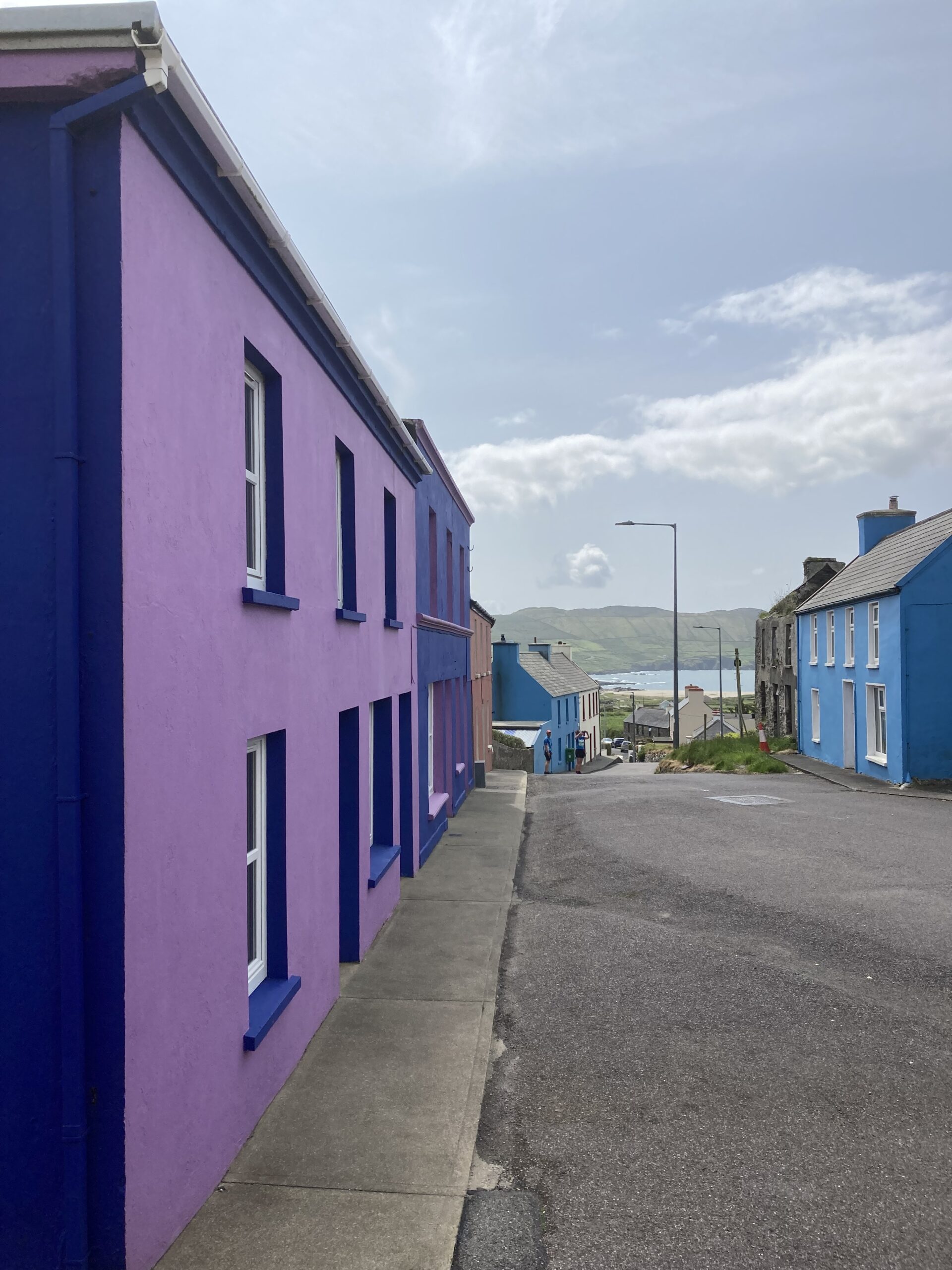

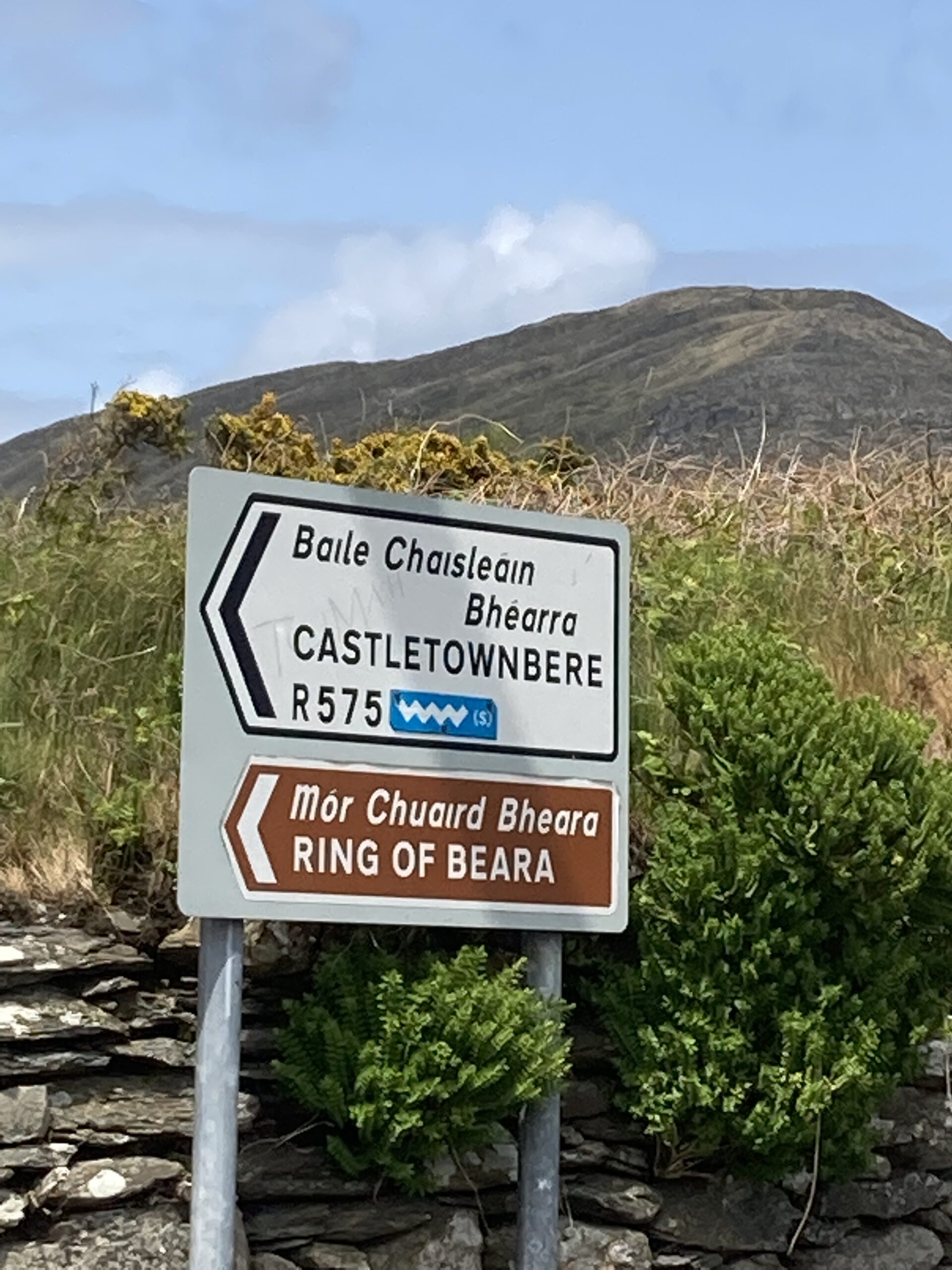
We were in Ireland, mainly travelling around the south west, the Beara peninsula in west Cork and up through county Kerry on part of what is known as the romantically named Wild Atlantic Way. This starts near Cork city and winds up the coast all the way to County Donegal, one of the most memorable routes in the world.
The views were glorious, as you’d expect: hillsides with 50 shades of green; village houses in vivid Liquorice Allsorts colours, as in Eyeries and Allihies on Beara. There are also rugged beaches and tiny Dursey Island off the tip of the peninsula, which you can only reach by boat or the cable car on a long line suspended over a narrow but choppy channel. The cable car, on the windy day we visited which was just shy of a proper Atlantic gale, wasn’t operating. Just well; it looked skittery small, hoiked up and stationary on the mainland side.
The drive along the north of the peninsula to Kenmare was also memorable, with turquoise coves and sheep dallying around their edges, dreaming of skinny dipping. After a day on the peninsula we took the winding, sometimes hairy, road back through the Caha mountains, over the Healy Pass to Adrigole, as a shortcut on the way home to our rental cottage.
We stayed for four days outside Castletownbere, the main town on the southern stretch of the peninsula, under the famously brooding Hungry Hill which inspired Daphne du Maurier’s book of the same name. The cottage was in the shadow of the hill but with a bedroom window looking straight onto to the ever changing Bantry Bay, and a good reason not to get out of bed in the morning. But to contemplate a lie-in while in Ireland is to miss all the doolally stuff.
The town is unfussy, with a nice harbour, a famous stone circle on its periphery, supposedly haunted by Iron Age ghouls. But the most famous landmark is still MacCarthy’s Bar, featured in the best-selling memoir by English travel writer, the late Pete McCarthy. It’s a brilliant book, and mostly hilarious, as he travels from Cork to Donegal in the 1990s, looking for the real Ireland beneath the tourist cliches, though his main theme was to visit all the MacCarthy’s bars along his route and sample their wares, all of which compounded his outlandish travel larks significantly.
His other preoccupation was to question whether his Irish roots on his mother’s side made him feel more Irish than English. By the end of the book he still hasn’t quite worked it out. But his search is achingly funny and candid, including a hellish three-day pilgrimage to St Patrick’s Purgatory on a tiny island on Loch Derg, Donegal, which McCarthy described as a mix of “Catholic flagellation and Celtic New Age whimsy”. Despite Purgatory’s deprivations, and there were many, he survived with a redemptive shimmer, sober and serious. Luckily for the reader, it didn’t last long.
As a side issue to plundering Irish roots, he also tries to unpick what makes the Irish different and much loved around the world. To him, it comes down to their sociability and warmth, the human touch, he says, and the fact that other people are drawn to the Irish because they’re also (or were in the 1990s) seen as charming underdogs, and romantically rebellious. Or maybe it’s because Irish people are just bloody good drinkers and purveyors of the best kind of craic (Celtic blethering) in the world.
McCarthy spent weeks in Castletownbere, frequenting MacCarthy’s Bar and even had its name changed for the cover photo of his book, by the same name, contracting the ‘Mac’ to Mc. The pub probably should have adopted the writer’s cheeky alteration because inside, the place is like a relic of the 1990s when he was there (frequently). It has a shabby chic, writer’s den appeal with lots of mahogany wood panelling and snugs, and in its way is a lasting memorial to the man who helped put the bar and Castletownbere on the map.
One wall is adorned with yellowing newspaper clippings about the book and the author, and according to the manager, people still come here just to see what all the fuss had been about. It’s not likely the bar will ever be the same as when McCarthy arrived and hugged a snug with a few pints of Guinness before joining in the infamous “all-night hooley” celebrating the landlady’s birthday.
The place still has lashings of appeal, eccentricity and blethery characters. The wall behind the bar is a muddle of mismatched wares: boxes of teabags, coffee, toothpaste … and mouthwash?! A nod perhaps to the days when the place doubled as a serious grocery, selling just about everything. And lastly there was also an ancient manual typewriter hunched against the back wall below football shirts and trendy book bags.
Was this clapped-out typewriter actually used by McCarthy? I asked the pub manager. He scratched his head and kept his options open. “Now that I don’t rightly know …. but it could be.” So, it could but I doubted McCarthy would have had the time and patience to batter out even a bit of manuscript on those ancient keys, distracted as he always seemed to be by drinkers, fiddlers, singers and storytellers, and plenty of malarkey going down.
The pub, when McCarthy visited, had a mascot-like pug dog and there’s a similar little guy in evidence, another nod to the place’s most famous drinker/scribbler. McCarthy would have approved, I’m sure, and the visit there turned out to be one of the highlights of our whole Irish trip.
The other top occurrence was stopping in Cork for three nights after we left Dublin. The city is small and traditional and feels more human-sized compared with teeming, modern Dublin which I first visited in the 1990s and did fabulous things like join literary walkabouts to pubs that had been typically the daily haunts of the country’s famous writers like James Joyce. I can’t think how the great scribes would handle places like the Temple Bar now, hoaching with tourists, where ceilidh nights or literary soirees seem harder to come by. But the pub is nevertheless still wonderful in its way.

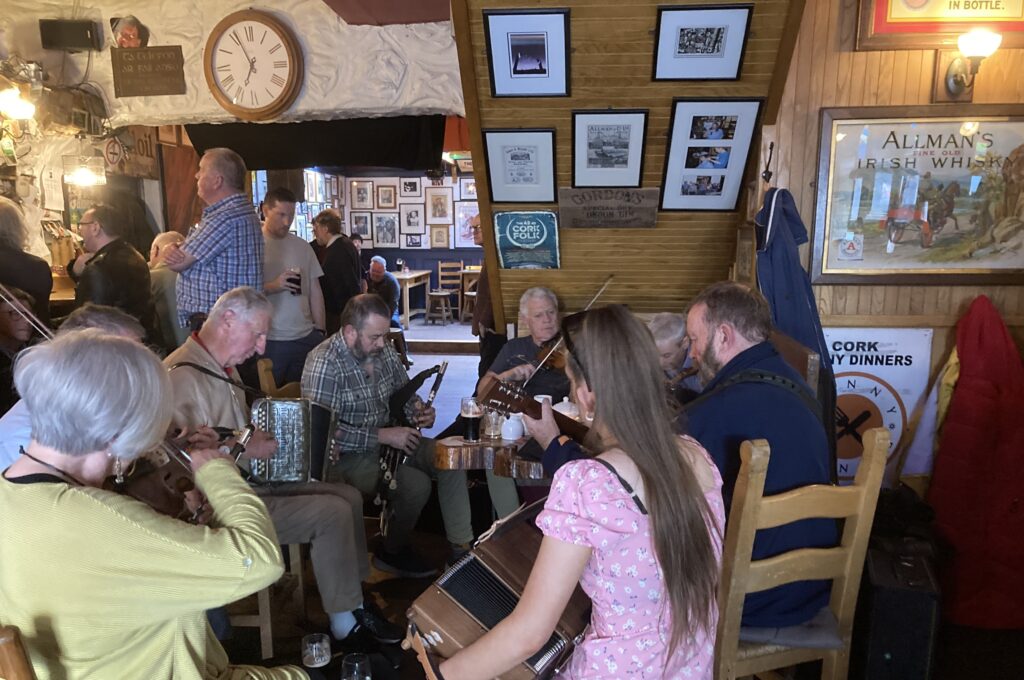
But Cork was a gem with older style pubs, some featuring ceilidh bands and energetic nights of Irish music, like in the Sin É (meaning ‘That’s It’ in Gaelic because the pub hunches up against a funeral home) on Coburg Street. The place was dead lively when we visited, the band going full throttle, the bar four people deep. The place had the kind of Irish vibrancy you hope to find there on just a brief trip but rarely do, so it was a huge achievement just lobbing by.
Cork also has some fine restaurants and shops and it was here that we found Pete McCarthy’s kind of Ireland, and people, with the human touch when I limped into a pharmacy on my first day, my heel peeling away after walking two days around Dublin in ill-fitting boots. The heel blister was huge, weepy, red raw and agony to walk on.
I told my sorry tale to the pharmacist, an older lady with a kindly face. When she asked how messy the blister was, I told her rather proudly: “Oh, not too bad now. I’ve tidied it up by cutting off the useless flappy bit of skin over it.”
She went pale. “Oh, tell me you didn’t really do that!!”
I nodded.
“Well … I’ll need to be looking at it now you’ve said that.”
I was ushered into a small examination room. Once I’d removed the sticky sock, she made a series of comical faces, and then gave the raw heel a blast of antiseptic and plied it with a series of different padded plasters, putting them on, taking them off, getting me up to walk on them, until she found the right one, thick and snug, and then bandaged the whole area. My heel was so padded and trussed up now I could have done a spot of River Dancing round the pharmacy, no trouble.
However, Mrs Nightingale added: “Don’t you be going about now walking on it. You need to rest that foot for a few days.”
“But I’m on holiday. Got to see Cork city. I’ll just hirple around on one foot, kind of.”
She had hands on hips now, a bit severe, but there was a gremlin sparkle in her eyes.
“It’ll take you longer … Cork on one leg. But we’ve all done it sometimes …”
Whatever that really meant, she gave me a cheery smile, and I left in a good mood and could even walk gingerly along with the great job she’d done on the heel. But it was the woman’s ministrations, the time she took, the bit of banter that offered the good outcome you rarely get these days in Britain when you have to stagger into a pharmacy half-dead, begging for help because at the medical centre your doctor is hiding under his desk and won’t come out.
Ireland has changed out of sight over the past few decades but I hope it never loses it sociability, as McCarthy would say, its sense of humour, its eccentricities. Quite apart from having my own Irish roots in the north, and the south (in Cork of all places, but that’s another story), I can’t wait to explore more of this wonderful country. And if I’m back in the south-west I hope MacCarthy’s bar will look just the same, with the typewriter still behind the bar and a pug for a bouncer. And the Cork pharmacist still dispensing care and banter to all the blister sisters who stagger into her shop.
McCarthy’s Bar: A Journey of Discovery in Ireland by Pete McCarthy, Hodder and Stoughton
Marjory McGinn’s latest travel memoir, Wake Me Up For The Elephants is now published to great reviews. You can pick up the ebook on Amazon for a few days (from March 27) at just 99p UK store or 99c US. The book is funny and candid and described by Times best-selling author Peter Kerr as “Travel writing at its best”.
It has stories this time from very different places including Ireland, a tale about staying in a Galway castle owned by a charismatic American couple plundering Irish roots big time. And there’s a hectic horse ride out to Omey Island at low tide with a lobster fisherman. Well, it’s Ireland afterall.
There are also stories from Africa, Fiji, Australia, Scotland, and one from Paxos, Greece.
Here’s a link.
https://mybook.to/WakeMeUpForElephants
For more information about Marjory’s memoirs and novels, based on four years living in Greece, and to make contact with the author, which is always welcome, go to her website: https://www.bigfatgreekodyssey.com
The author also has a new writer’s page on Facebook: https://www.facebook.com/MarjoryMcGinnWrites
Thanks for dropping by.
© All rights reserved. All text and photographs copyright of the authors 2010-2024. No content/text or photographs may be copied from the blog without the prior written permission of the authors. This applies to all posts on the blog.
